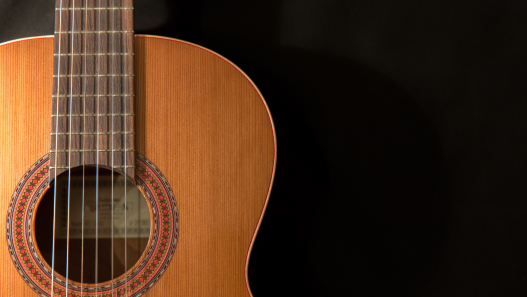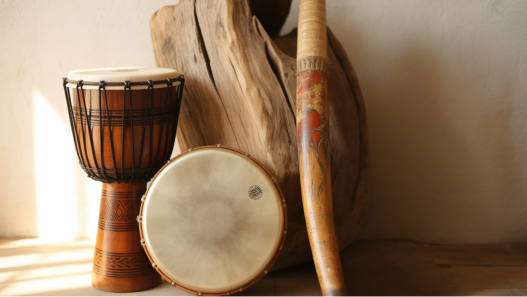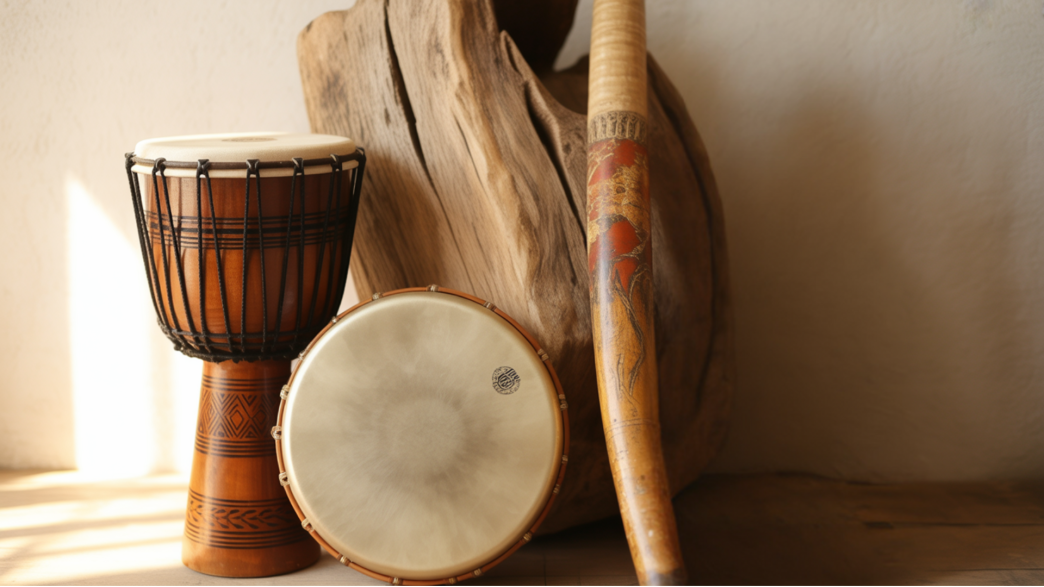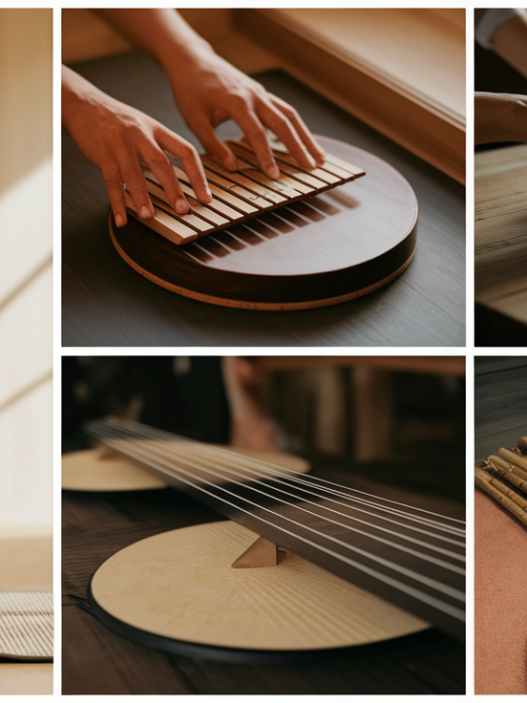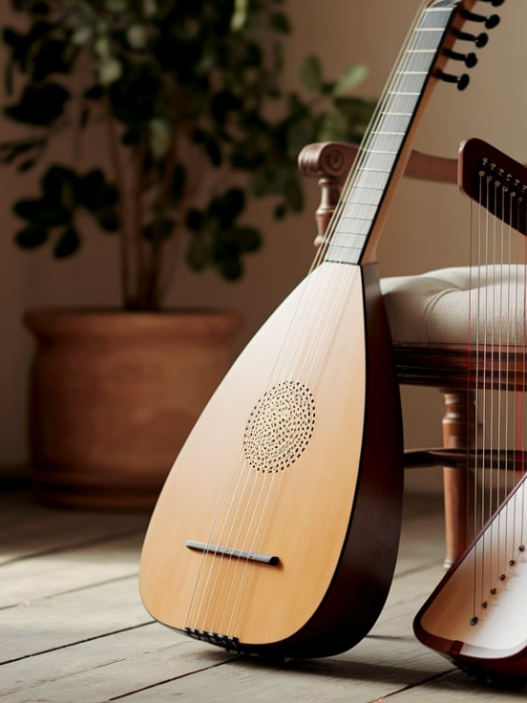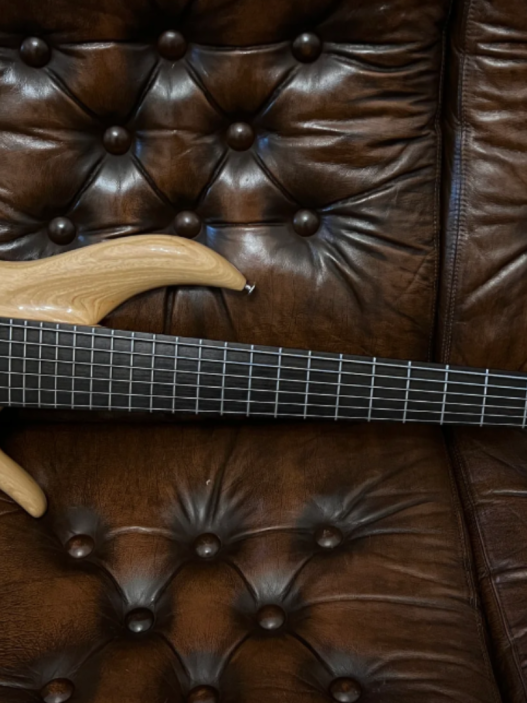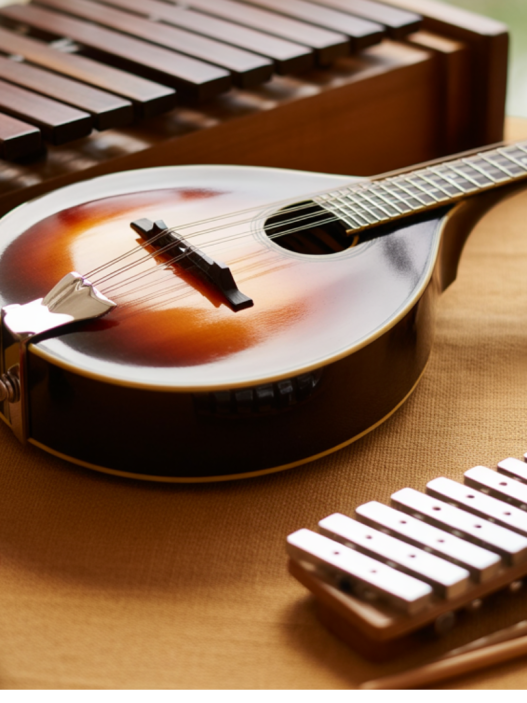What if there’s an instrument that’s been played for 40,000 years without changing? Or drums that actually talk to dancers?
These aren’t made-up stories. They’re real instruments hiding behind the letter D. The ancient Didgeridoo uses circular breathing that lets players make sound for hours without stopping.
Chinese bells were buried with emperors because people thought they could talk to dead relatives. Indian drums have two heads tuned to chat with each other like old friends.
Before modern tools existed, termites helped make instruments by eating perfect holes in wood. Musicians turned clay pots into drums when they couldn’t buy real ones. Some instruments need two people, one for music and one just for breathing.
Ready to meet instruments that will change how you think about music? Let’s start your musical treasure hunt through the hidden world of D instruments!
Why Study Instruments by Letter?
Learning about instruments in alphabetical order makes it easier to remember them. It’s like having a musical dictionary at your fingertips. When you organize instruments this way, you can quickly find what you’re looking for.
The letter D gives us instruments from every corner of the world. You’ll find a mix of traditional folk instruments and modern concert pieces. This method helps you learn about different cultures through their music.
Quick Guide: Instrument Families
Musical instruments fit into four main groups. Understanding these groups helps you learn how different instruments work. Each family makes sounds in its own special way.
- Aerophones are wind instruments. You blow air through them to make music. Flutes and horns belong to this group.
- Chordophones are string instruments. They have strings that vibrate to create sound. Guitars and harps are good examples.
- Membranophones are drums and similar instruments. They have a stretched surface that you hit or shake. Most drums fall into this category.
- Idiophones make sound by vibrating themselves. You don’t need to blow air or pluck strings. Bells and wooden blocks are common examples.
Now, let’s take a look at the complete collection of instruments that start with D, organized by their respective instrument families.
Aerophones (Wind D-Instruments)
Wind instruments that start with D showcase the incredible variety of human breath transformed into music.
1. Didgeridoo
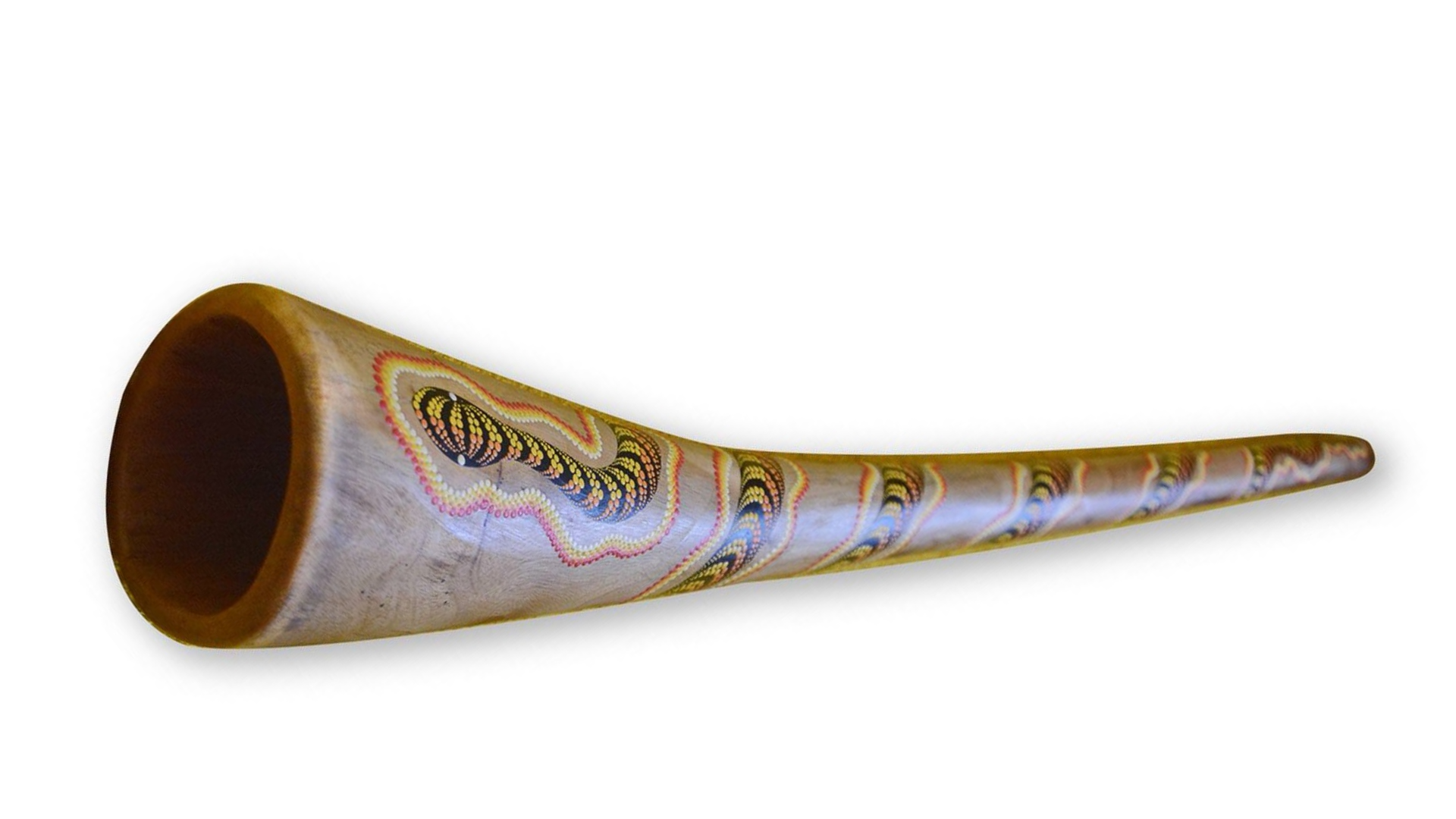
A didgeridoo is an Australian Aboriginal wind instrument made from a long wooden tube that creates deep, resonant drone sounds.
- Origin: The didgeridoo originated with Aboriginal Australians over 40,000 years ago, making it one of the world’s oldest wind instruments.
- Sound: The sound is deep, droning, and hypnotic, with players creating complex rhythms and overtones through circular breathing.
- How it works: Musicians blow air through the tube while using their lips, tongue, and vocal cords to create different sounds and rhythms.
- Interesting fact: Traditional didgeridoos are made from eucalyptus branches hollowed out by termites, and each instrument is considered sacred to its Aboriginal maker.
2. Daegeum

A daegeum is a large Korean bamboo flute with a membrane-covered hole that gives it a distinctive buzzing sound.
- Origin: The daegeum developed in Korea during the Silla Dynasty (57 BC – 935 AD) and remains central to Korean traditional music.
- Sound: The sound is rich, breathy, and has a unique buzzing quality from the membrane, making it perfect for expressive melodies.
- How it works: Players blow across a side hole while covering finger holes, with a thin membrane creating the characteristic buzzing effect.
- Interesting fact: The membrane is made from reed or bamboo inner skin and must be carefully maintained to preserve the instrument’s special sound quality.
3. Dizi
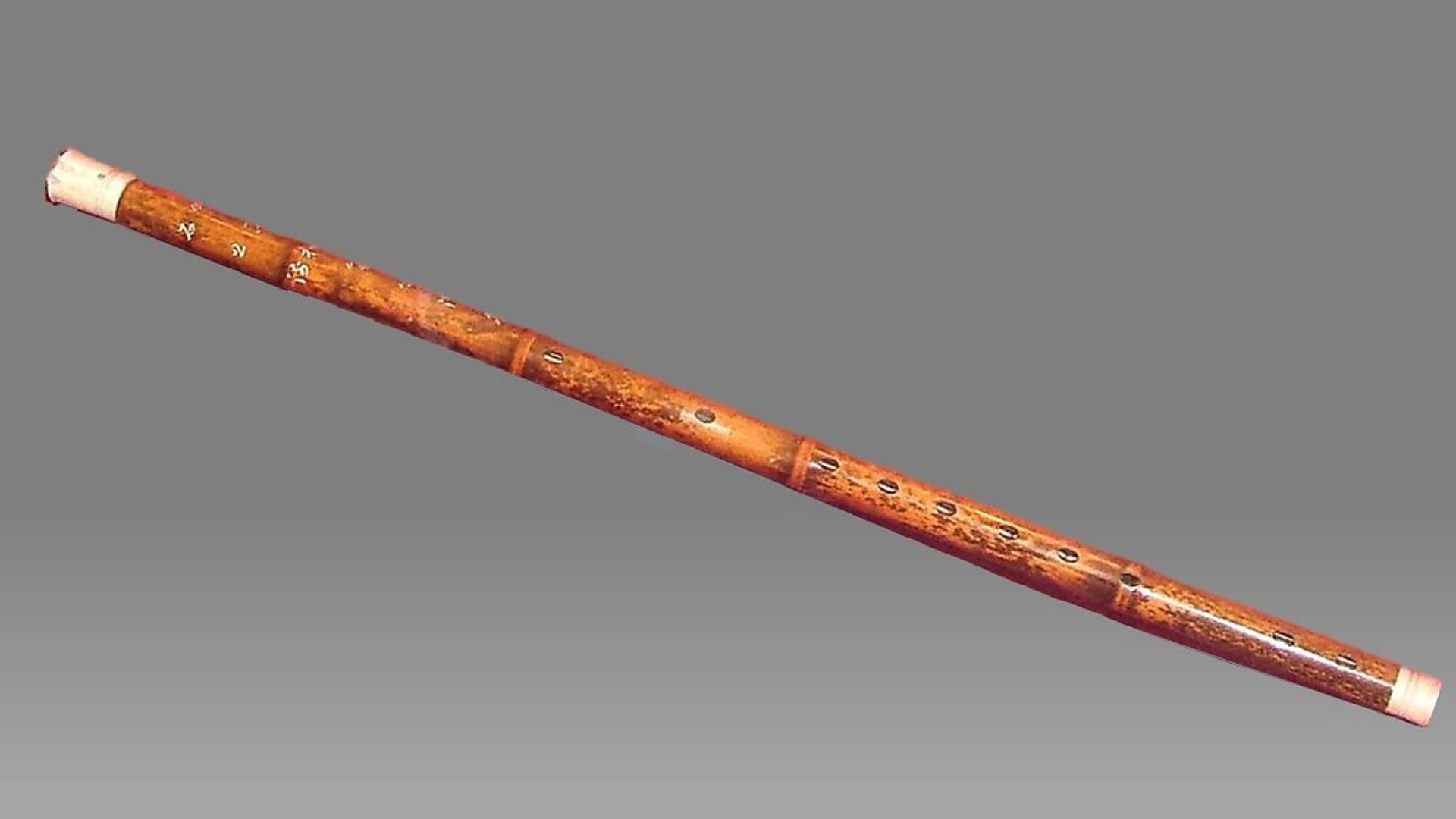
A dizi is a Chinese bamboo flute with a membrane hole that creates a bright, penetrating sound in Chinese classical music.
- Origin: The dizi originated in China over 2,000 years ago and became essential in Chinese opera, folk music, and classical ensembles.
- Sound: The sound is bright, clear, and expressive, with the membrane adding a distinctive buzzing resonance to the tone.
- How it works: Musicians blow across a side hole while fingering holes along the body, with a membrane hole creating unique timbral effects.
- Interesting fact: Different regions of China have their own dizi styles, with northern dizi being larger and deeper than southern varieties.
4. Dvojnice
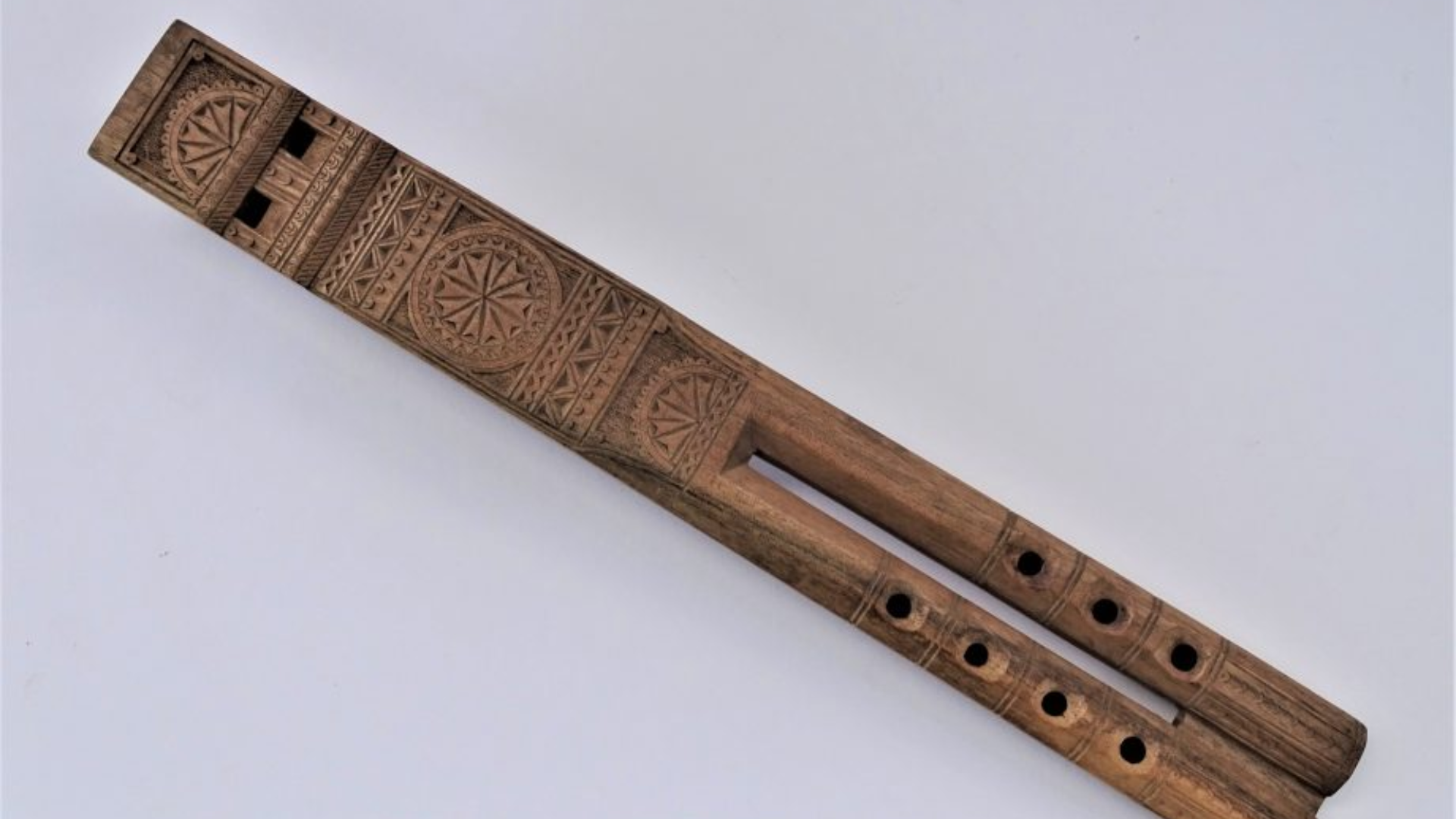
A dvojnice is a traditional double flute from the Balkans, made from a single piece of wood with two parallel pipes.
-
Origin: The dvojnice comes from Croatia, Serbia, and Bosnia, and is central to pastoral folk music.
-
Sound: It produces a rich, harmonized melody with one pipe playing the main tune and the other a drone or harmony.
-
How it works: The musician blows into a single mouthpiece while covering finger holes on both pipes to produce two tones simultaneously.
-
Interesting fact: Shepherds historically played the dvojnice while tending flocks, filling the valleys with unique, polyphonic sounds.
5. Danso
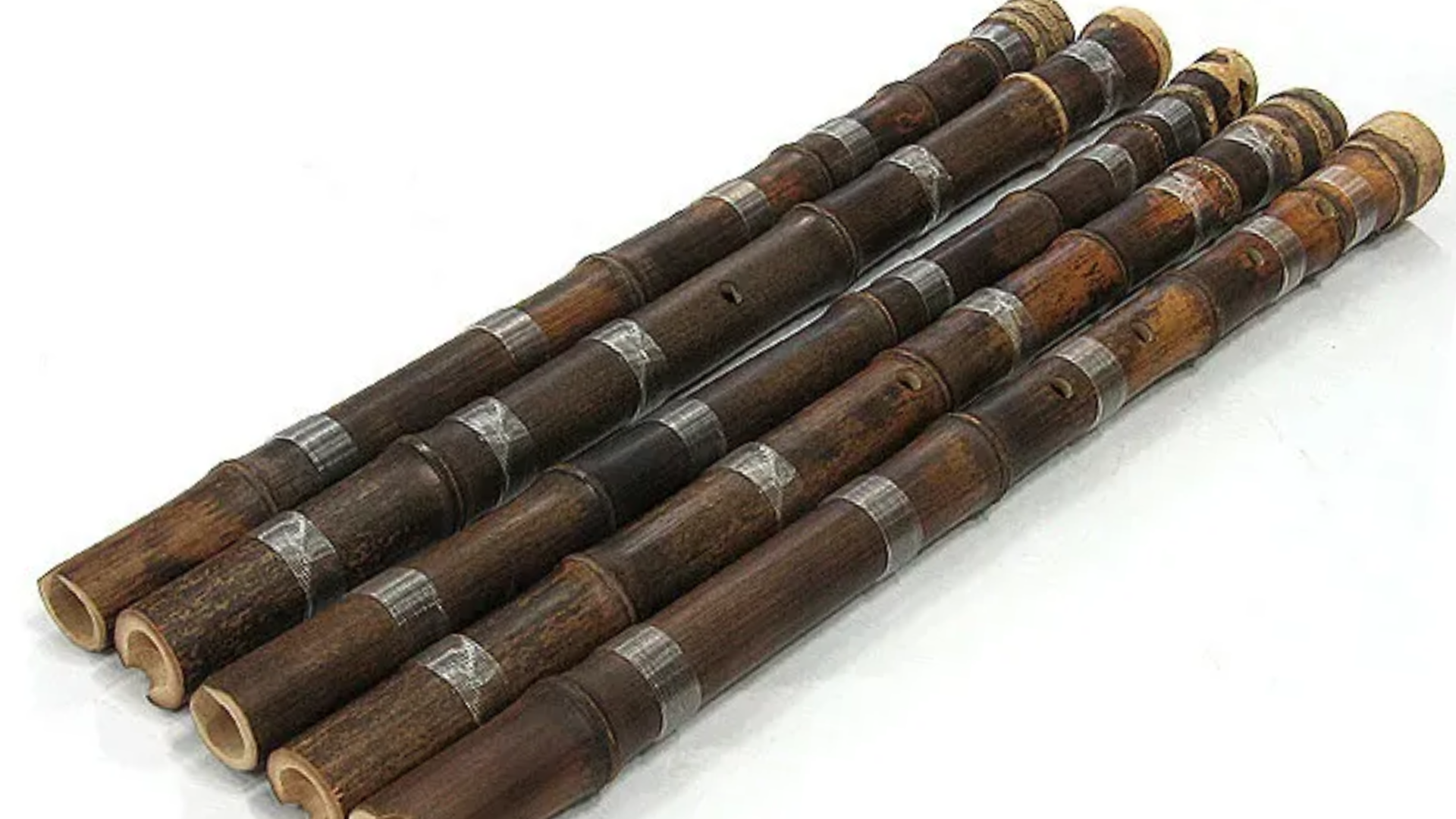
A danso is a Korean bamboo flute similar to a recorder, commonly used in traditional Korean music education.
- Origin: The danso was developed in Korea as a simplified version of traditional Korean flutes, designed for teaching music fundamentals.
- Sound: The sound is sweet, clear, and gentle, perfect for learning basic melodies and traditional Korean songs.
- How it works: Players blow through a mouthpiece similar to a recorder while covering finger holes to create different pitches.
- Interesting fact: The danso is often the first traditional instrument Korean children learn, serving as an introduction to their musical heritage.
6. Double Bass Flute
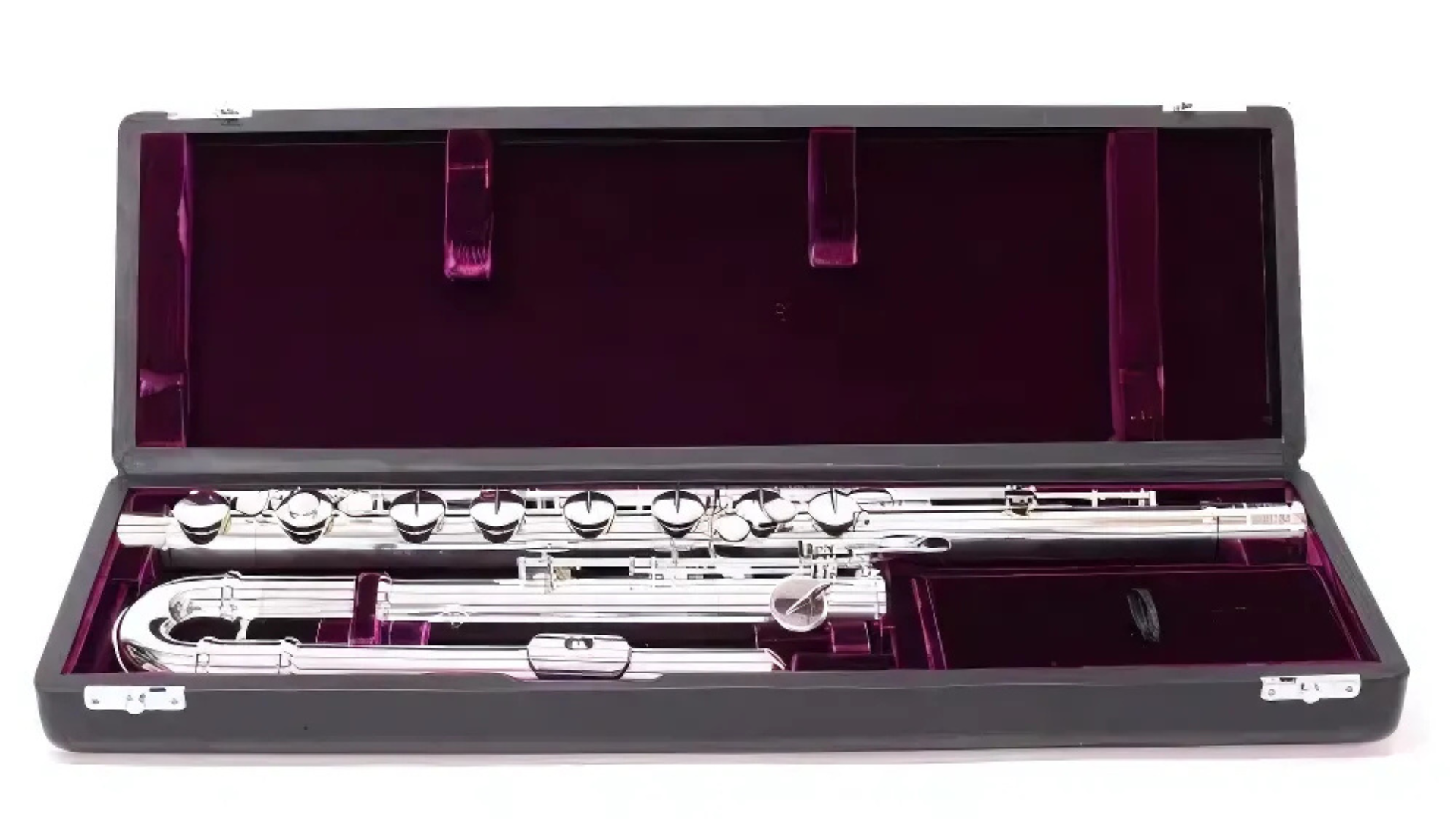
A double bass flute is a large, low-pitched member of the flute family, producing deep, rich tones in the flute’s lowest register.
- Origin: The double bass flute was developed in the 20th century as composers sought to extend the flute family’s range into lower registers.
- Sound: The sound is deep, breathy, and haunting, with a rich harmonic content that creates an almost otherworldly atmosphere.
- How it works: Musicians blow across a side hole like other flutes, but the instrument’s large size and length create much lower pitches.
- Interesting fact: The double bass flute is so large that it often requires a stand or special support system, and some models have curved sections to make them more manageable.
7. Duduk
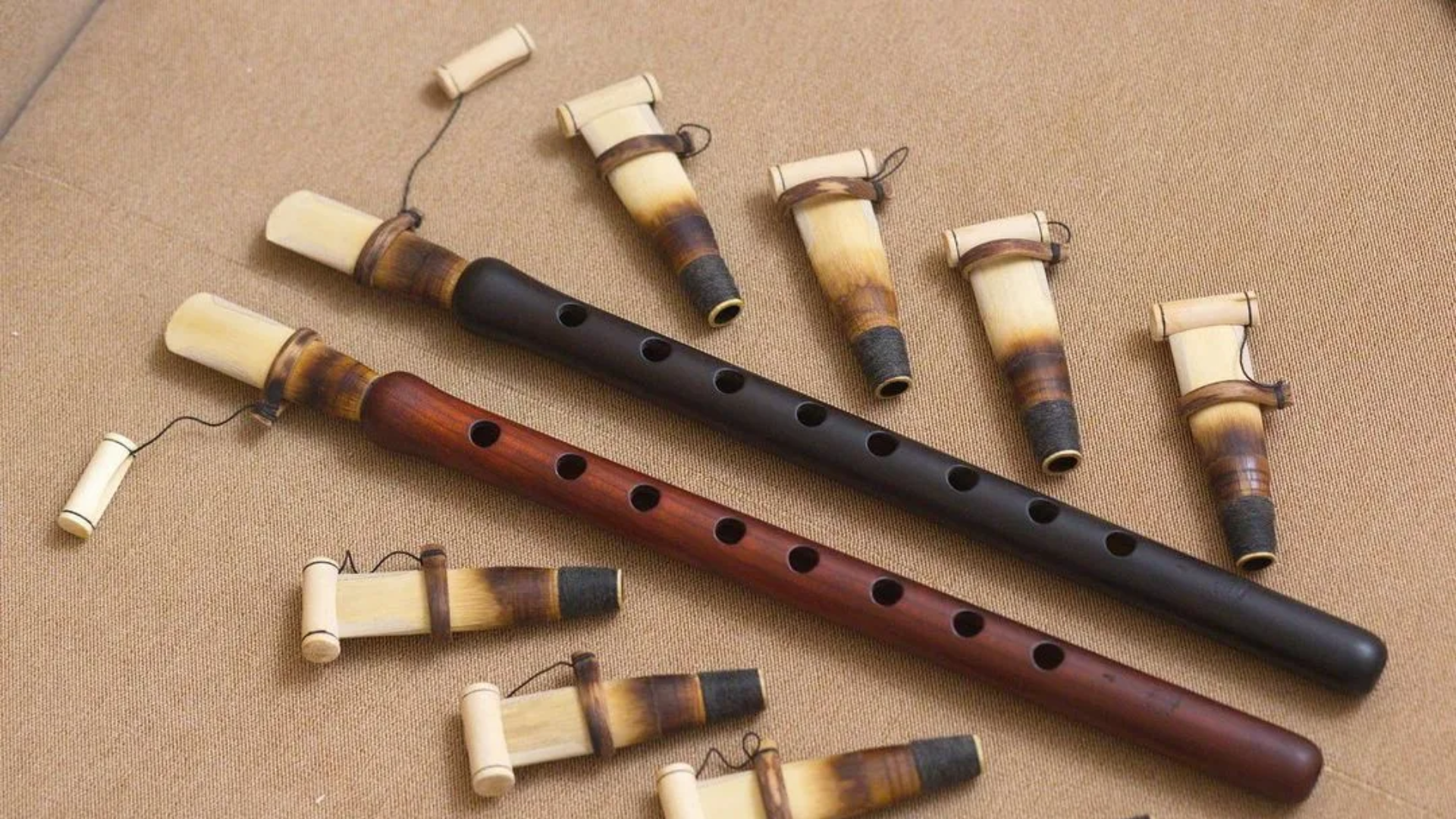
A duduk is an Armenian double-reed woodwind instrument made from apricot wood, known for its deeply emotional sound.
- Origin: The duduk originated in Armenia over 1,500 years ago and is considered the national instrument of Armenia, recognized by UNESCO.
- Sound: The sound is warm, melancholic, and deeply expressive, often described as the most human-like of all wind instruments.
- How it works: Musicians blow through a large double reed while fingering holes along the wooden body to create haunting melodies.
- Interesting fact: The duduk requires a second player called a “dam” who provides a continuous drone, allowing the main player to breathe while maintaining constant sound.
8. Dulzaina
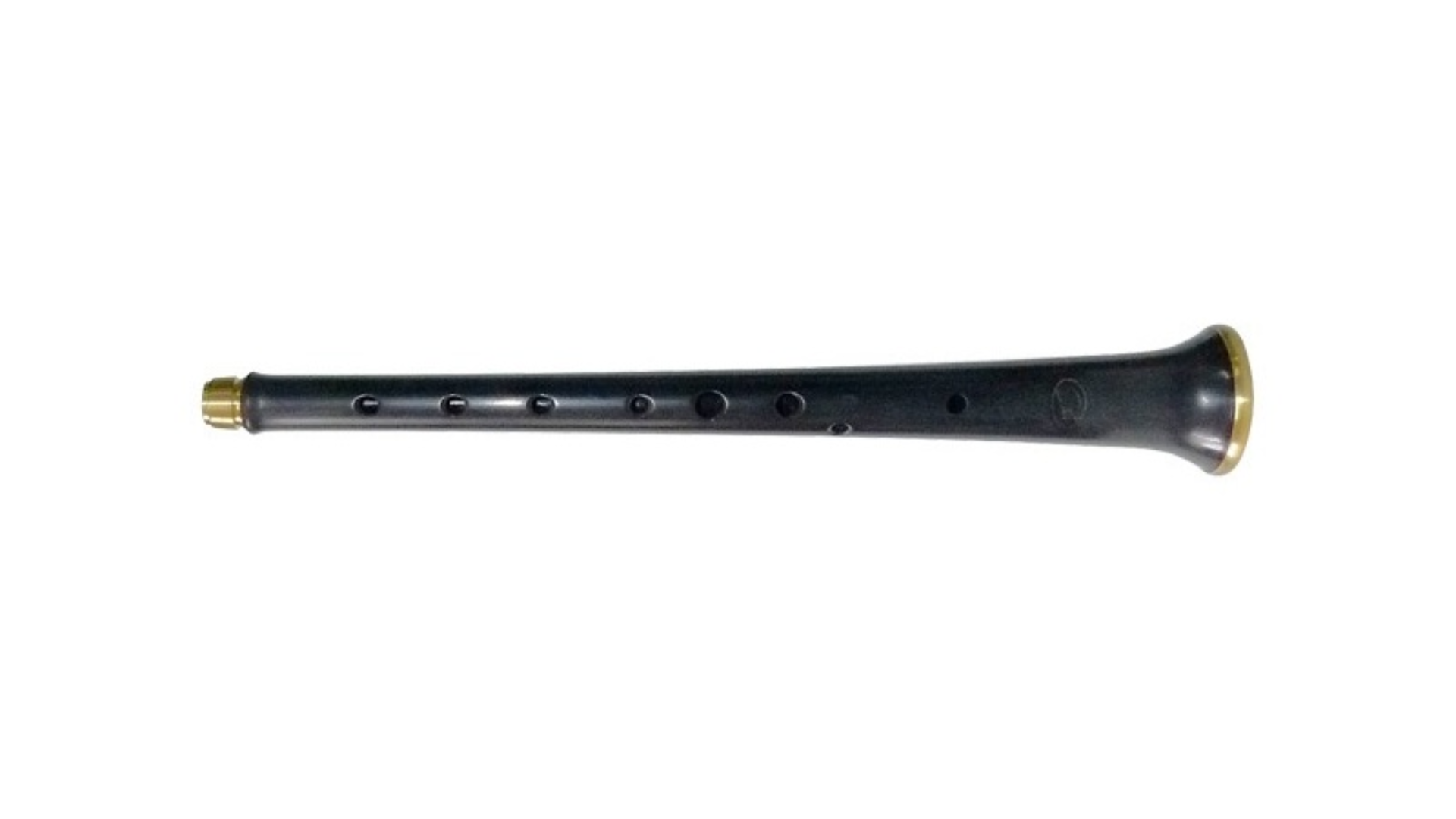
A dulzaina is a Spanish double-reed wind instrument similar to an oboe, used in traditional folk music.
- Origin: The dulzaina originated in Spain during the medieval period and spread throughout Spanish-speaking regions.
- Sound: The sound is loud, bright, and festive, perfect for outdoor celebrations and traditional dance music.
- How it works: Players blow through a double reed while fingering holes along the wooden body to create melodies.
- Interesting fact: Different regions of Spain have their own dulzaina traditions, with some variations having different numbers of holes and unique playing techniques.
9. Diplica
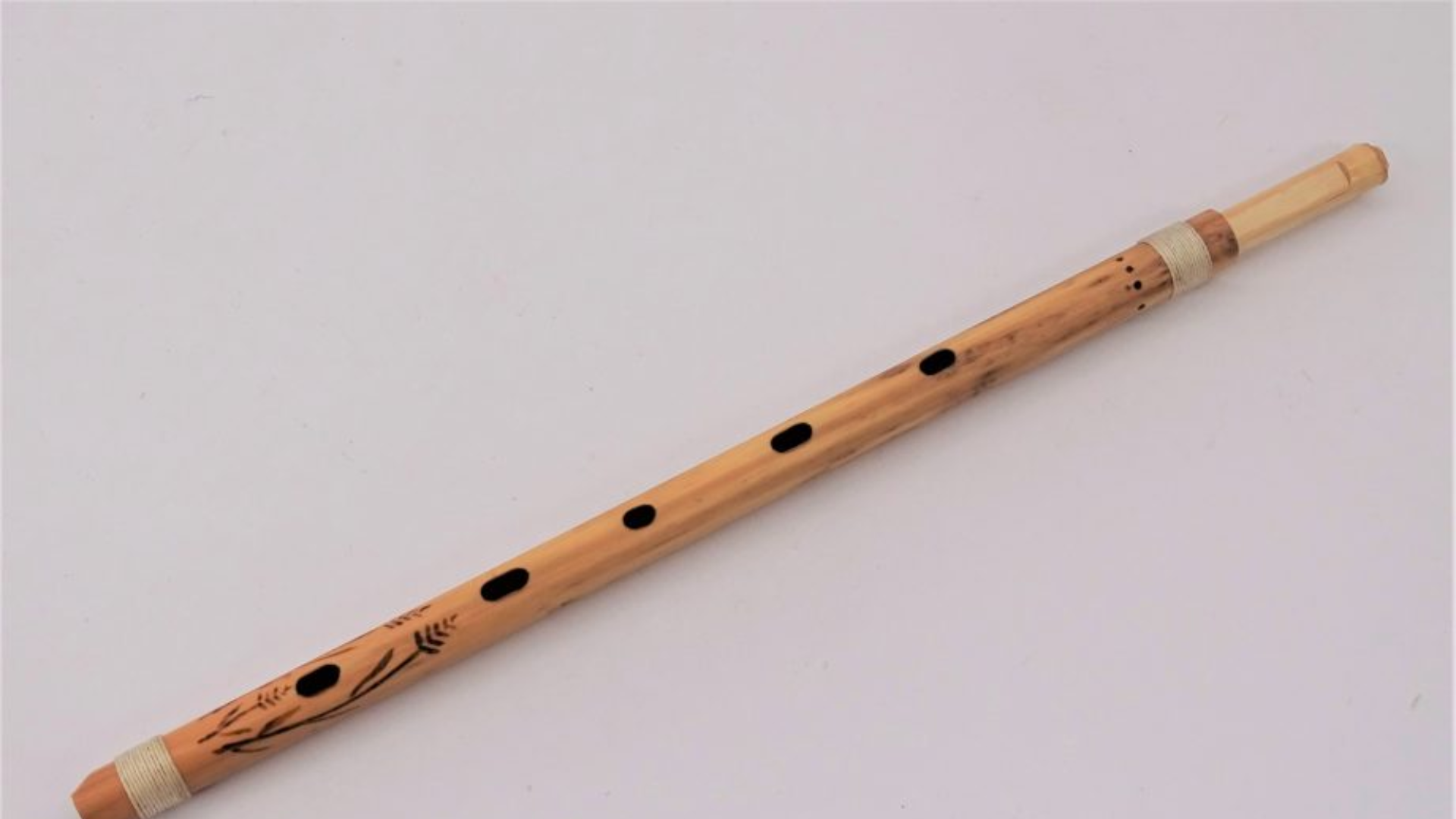
A diplica is a traditional double flute from the Balkans, where two flutes are played simultaneously by one musician.
- Origin: The diplica originated in the Balkan region, particularly in Serbia and Macedonia, where it remains popular in folk music.
- Sound: The sound is rich and harmonious, with one flute playing melody while the other provides harmony or drone.
- How it works: Musicians play both flutes at once, using different fingering patterns to create two-part harmonies.
- Interesting fact: Master diplica players can create complex polyphonic music that sounds like multiple musicians playing together.
Chordophones (String D-Instruments)
String instruments beginning with “D” tell stories of human creativity that span cultures and centuries.
Each plucked string or bowed note carries the musical traditions of its people, from Vietnamese zithers to American folk instruments.
11. Dulcimer
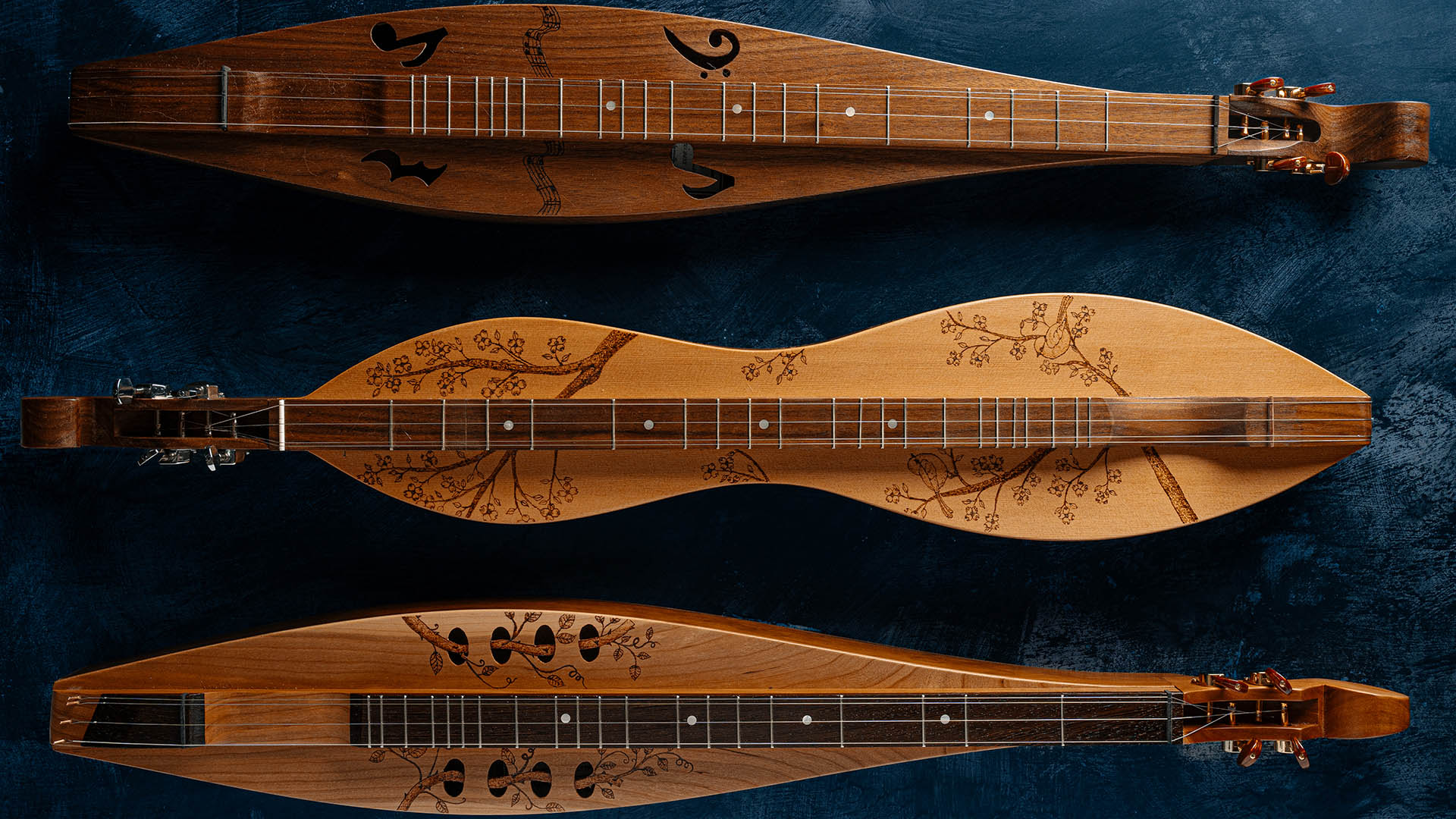
A dulcimer is a stringed instrument played by striking strings with hammers or plucking them with fingers or picks.
- Origin: The dulcimer family includes instruments from many cultures, with hammered dulcimers originating in the Middle East and mountain dulcimers in Appalachia.
- Sound: The sound is sweet, resonant, and melodic, with hammered versions creating shimmering cascades of notes.
- How it works: Strings are stretched over a wooden soundboard and played either by striking with hammers or plucking with fingers or picks.
- Interesting fact: The Appalachian mountain dulcimer is often called the most American of all instruments, developed by European settlers in isolated mountain communities.
12. Domra
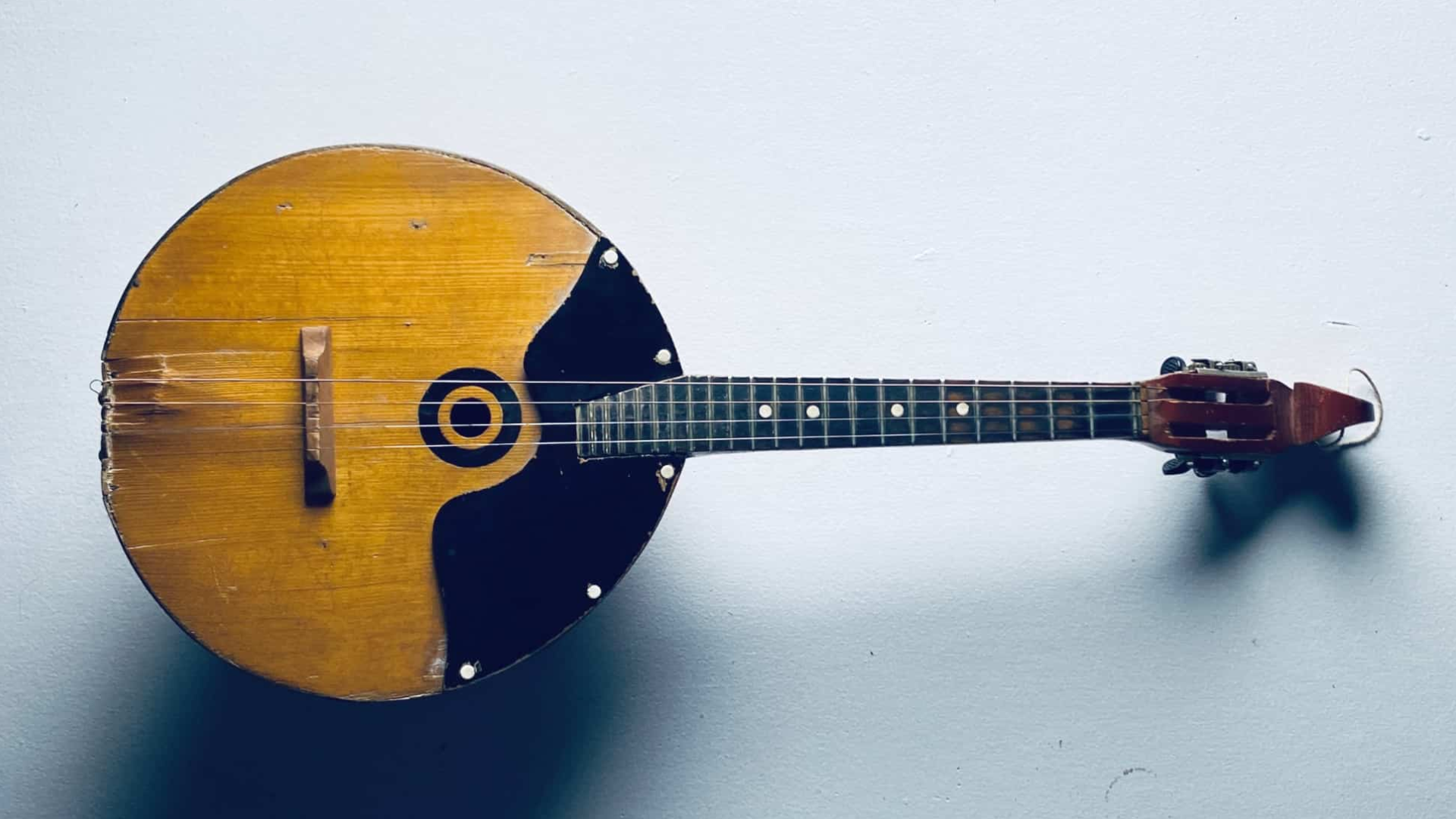
A domra is a Russian plucked string instrument with a round body and long neck, central to Russian folk music.
- Origin: The domra originated in Russia in the 16th century and was later standardized in the 19th century as part of Russian folk orchestras.
- Sound: The sound is bright, crisp, and melodic, capable of both delicate melodies and rapid technical passages.
- How it works: Musicians pluck the strings with a pick while pressing the neck to change pitches, similar to a mandolin.
- Interesting fact: The modern domra was recreated in the 1890s by Vasily Andreyev, who helped establish Russian folk orchestras throughout the country.
13. Diddley Bow
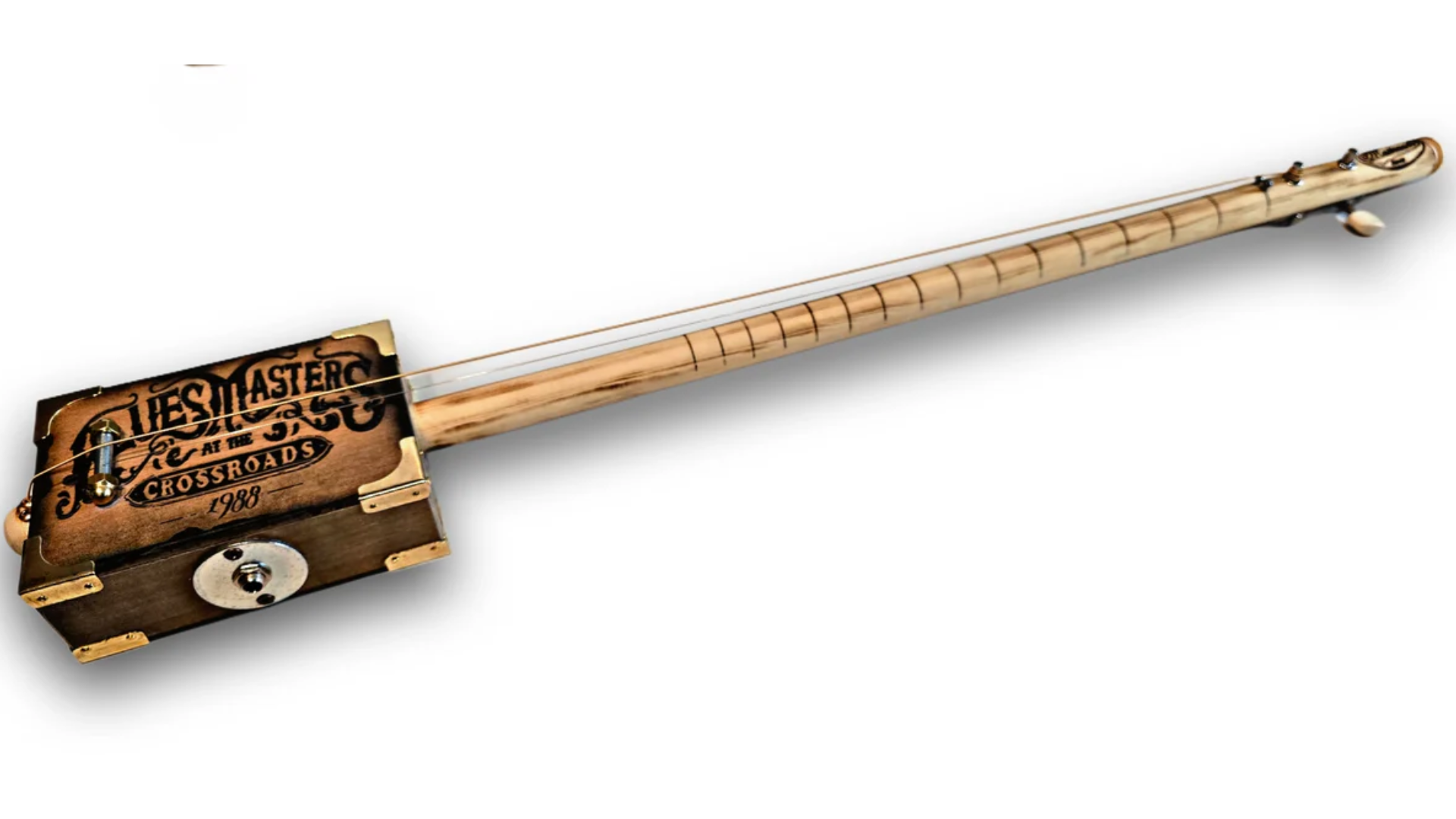
A diddley bow is a one-string American folk instrument, often considered a simplified version of the guitar.
- Origin: The diddley bow originated in the American South, developed by African Americans as an accessible introduction to string instruments.
- Sound: The sound is raw, bluesy, and expressive, despite having only one string to work with.
- How it works: A single string is stretched over a wooden board or wall, played by plucking while sliding objects along the string to change pitch.
- Interesting fact: Many famous blues musicians, including B.B. King, learned music fundamentals on homemade diddley bows before progressing to guitars.
14. Dan Bau
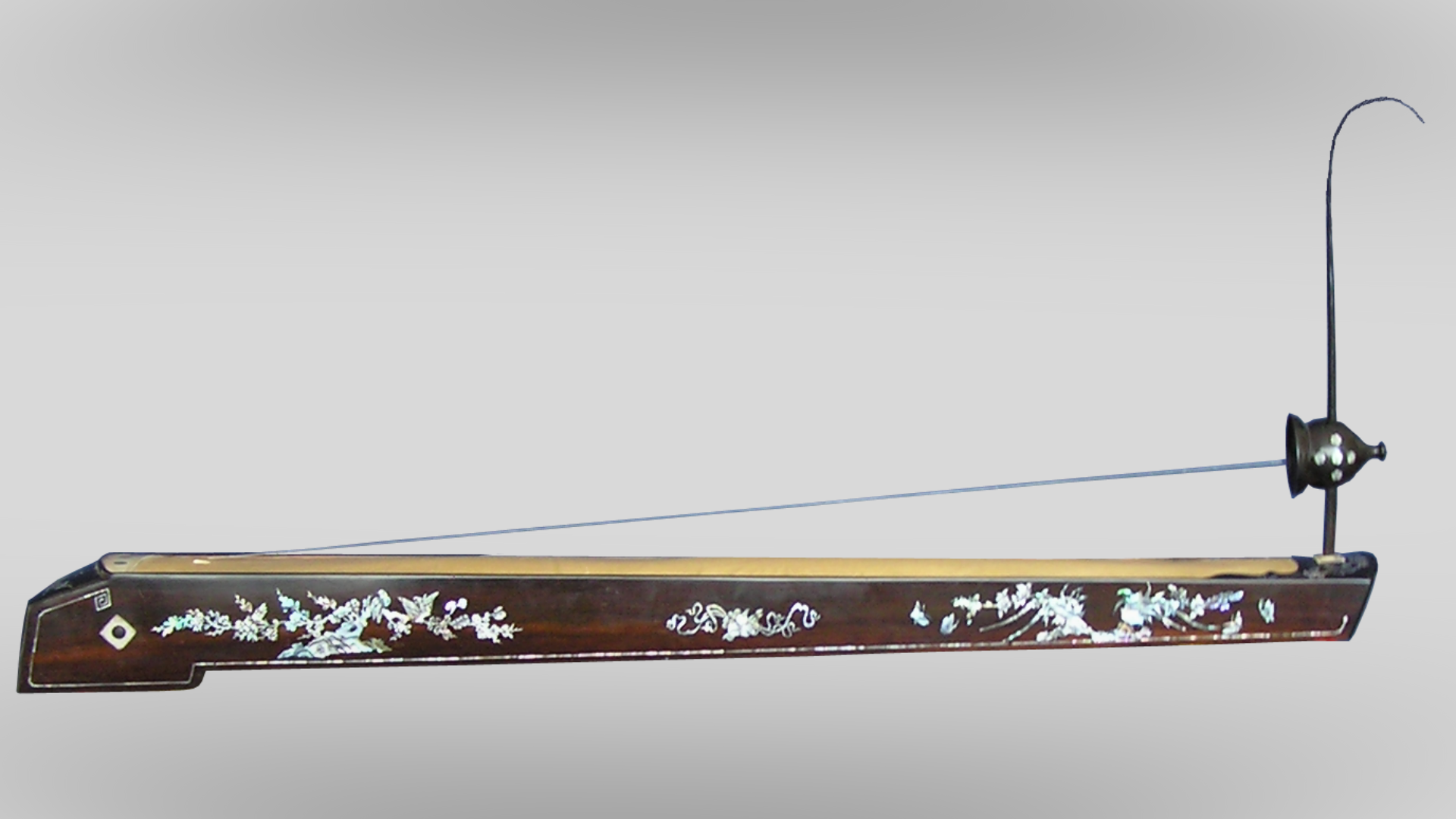
A dan bau is a Vietnamese one-string zither with a flexible rod that bends to change pitch.
- Origin: The dan bau originated in Vietnam over 1,000 years ago and remains an important instrument in Vietnamese traditional music.
- Sound: The sound is haunting, expressive, and capable of remarkable pitch bending that mimics human vocal inflections.
- How it works: Players pluck the string while bending a flexible rod attached to one end, creating smooth pitch changes and vibrato effects.
- Interesting fact: Master dan bau players can create the illusion of multiple strings playing by using advanced techniques that produce harmonic overtones.
15. Dobro
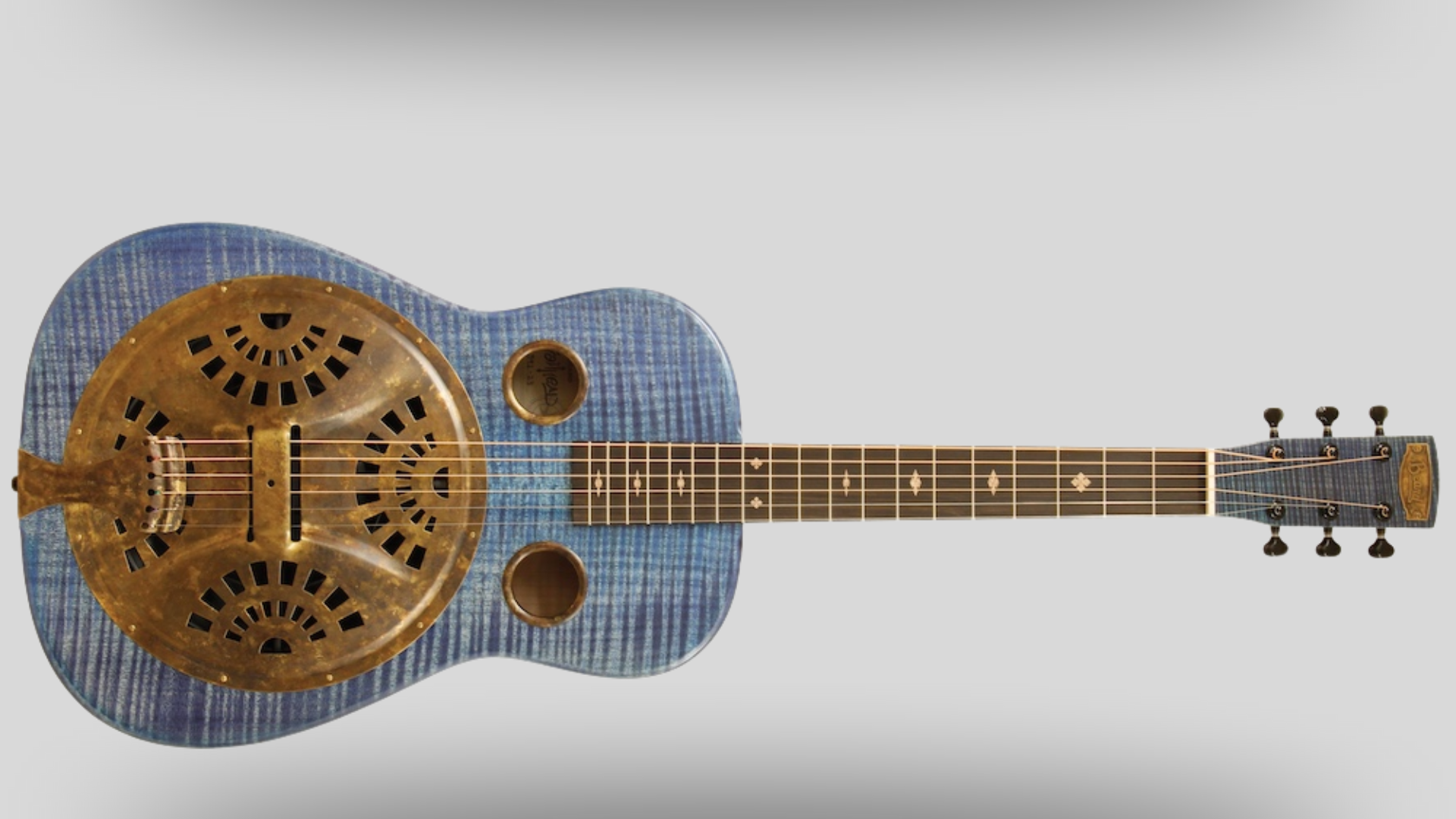
A dobro is a resonator guitar with metal cones inside the body that amplify and modify the sound.
- Origin: The dobro was invented in the 1920s by the Dopyera brothers in America, combining guitar techniques with resonator technology.
- Sound: The sound is loud, metallic, and sustaining, with a distinctive brightness that cuts through ensemble music.
- How it works: Strings vibrate over metal resonator cones that amplify the sound mechanically, without electricity.
- Interesting fact: The name “dobro” comes from the Dopyera brothers’ company name and also means “good” in their native Slovak language.
16. Dombra
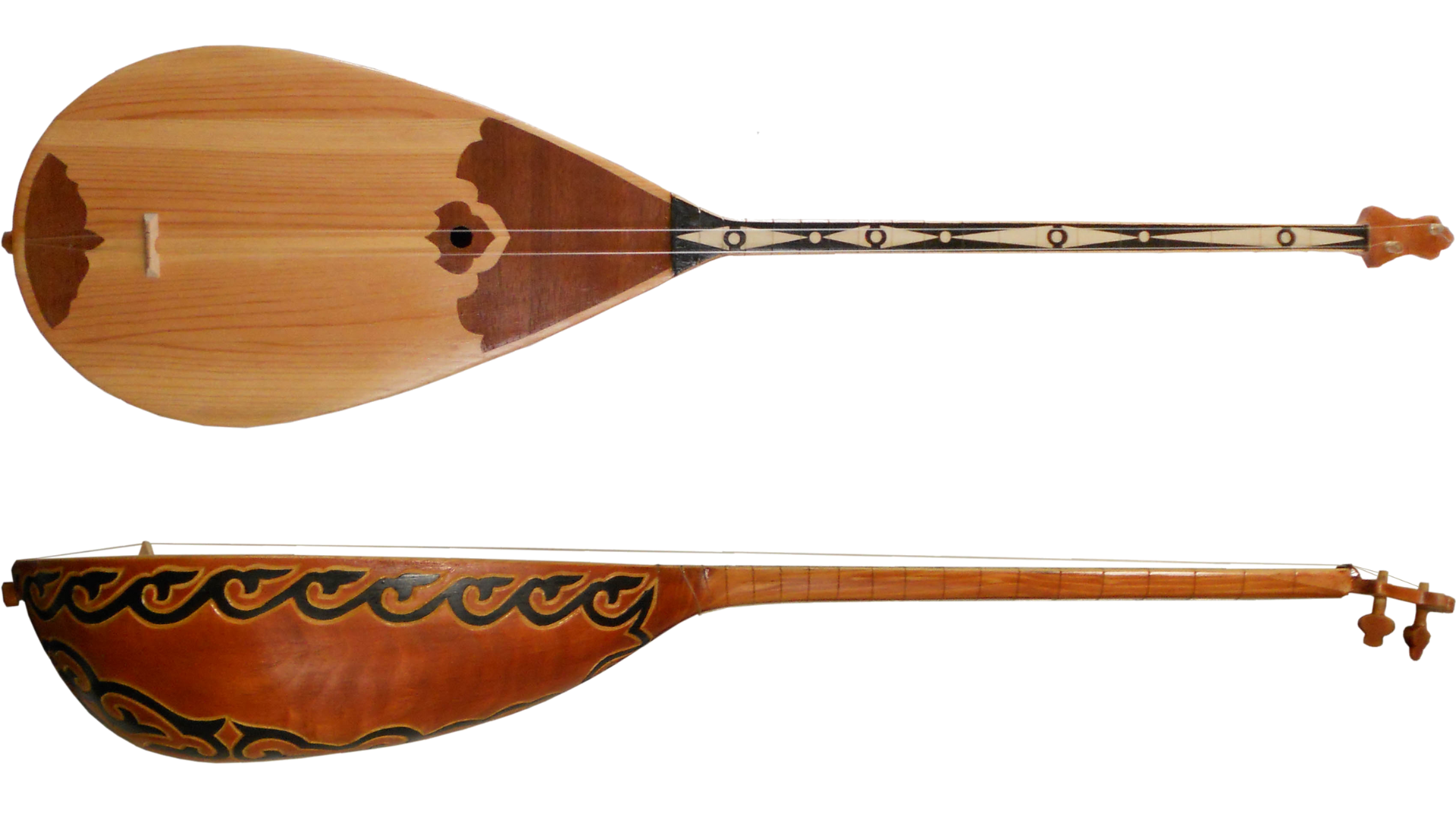
A dombra is a Central Asian plucked string instrument with two strings and a long neck, important in Kazakh and Kyrgyz music.
- Origin: The dombra originated in Central Asia and has been central to Kazakh, Kyrgyz, and other Turkic cultures for centuries.
- Sound: The sound is warm, melodic, and intimate, perfect for accompanying traditional songs and epic storytelling.
- How it works: Musicians pluck the two strings with fingers or a pick while pressing the neck to create different pitches and melodies.
- Interesting fact: The dombra is considered the national instrument of Kazakhstan and plays a central role in preserving oral traditions and epic poems.
17. Dan Tranh

A dan tranh is a Vietnamese zither with 16-17 strings, each supported by a movable bridge for tuning.
- Origin: The dan tranh developed in Vietnam, influenced by the Chinese guzheng but adapted to Vietnamese musical traditions and preferences.
- Sound: The sound is delicate, expressive, and capable of subtle ornaments that characterize Vietnamese classical music.
- How it works: Players pluck strings with picks on their fingers while pressing behind bridges to create pitch bends and ornaments.
- Interesting fact: Each string of the dan tranh can be fine-tuned by adjusting its movable bridge, allowing for precise intonation and special effects.
18. Dutar
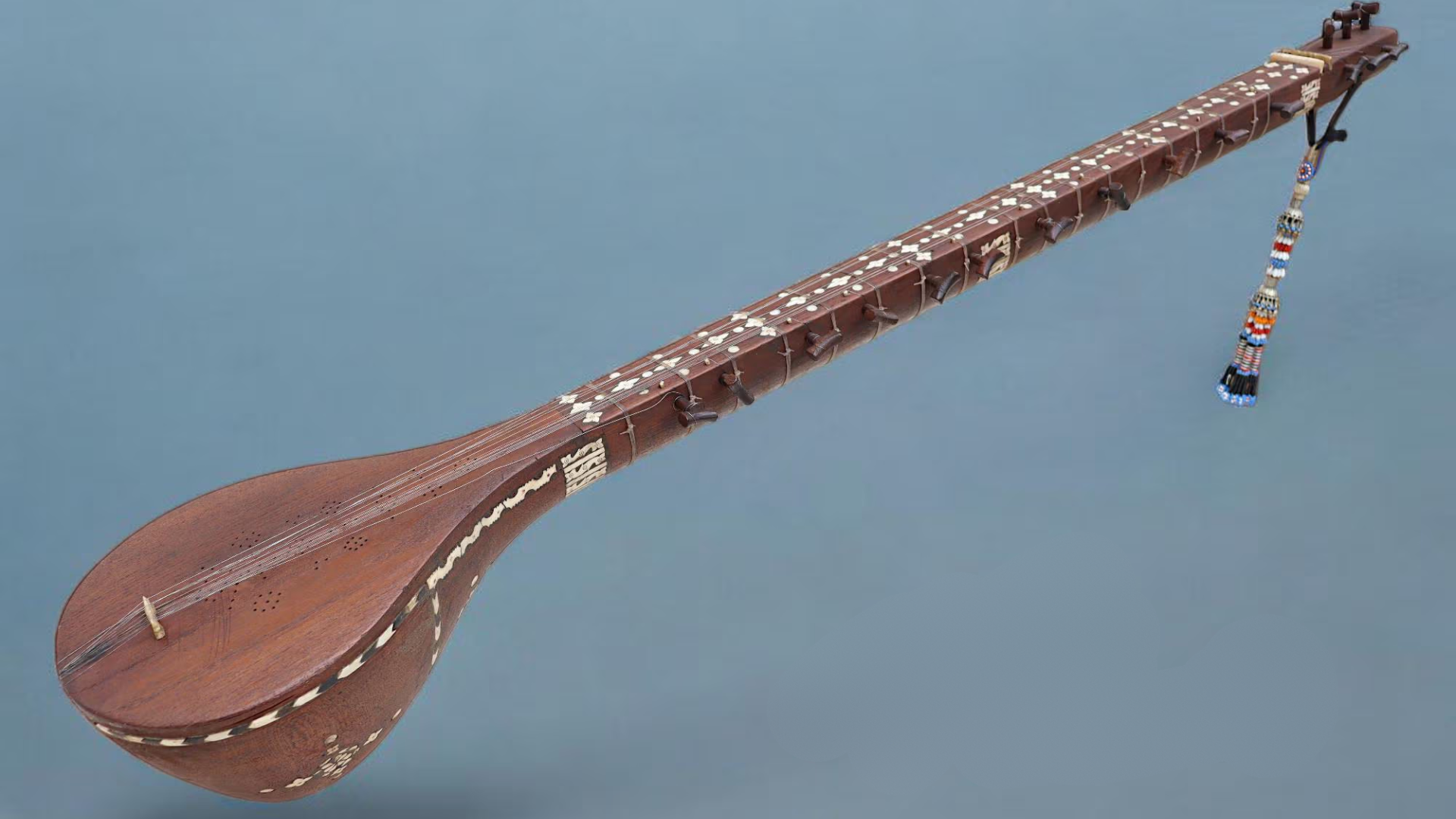
A dutar is a Central Asian plucked string instrument with two strings, popular in Afghanistan, Iran, and surrounding regions.
- Origin: The dutar originated in Central Asia and has been played for centuries in Afghanistan, Tajikistan, Uzbekistan, and Iran.
- Sound: The sound is warm, resonant, and rhythmic, often used for both melody and accompaniment in traditional music.
- How it works: Musicians pluck the two strings with fingers or a pick, with one string typically playing melody and the other providing rhythm.
- Interesting fact: The word “dutar” literally means “two strings” in Persian, and similar instruments exist throughout the region with local variations.
19. Đàn Nguyệt
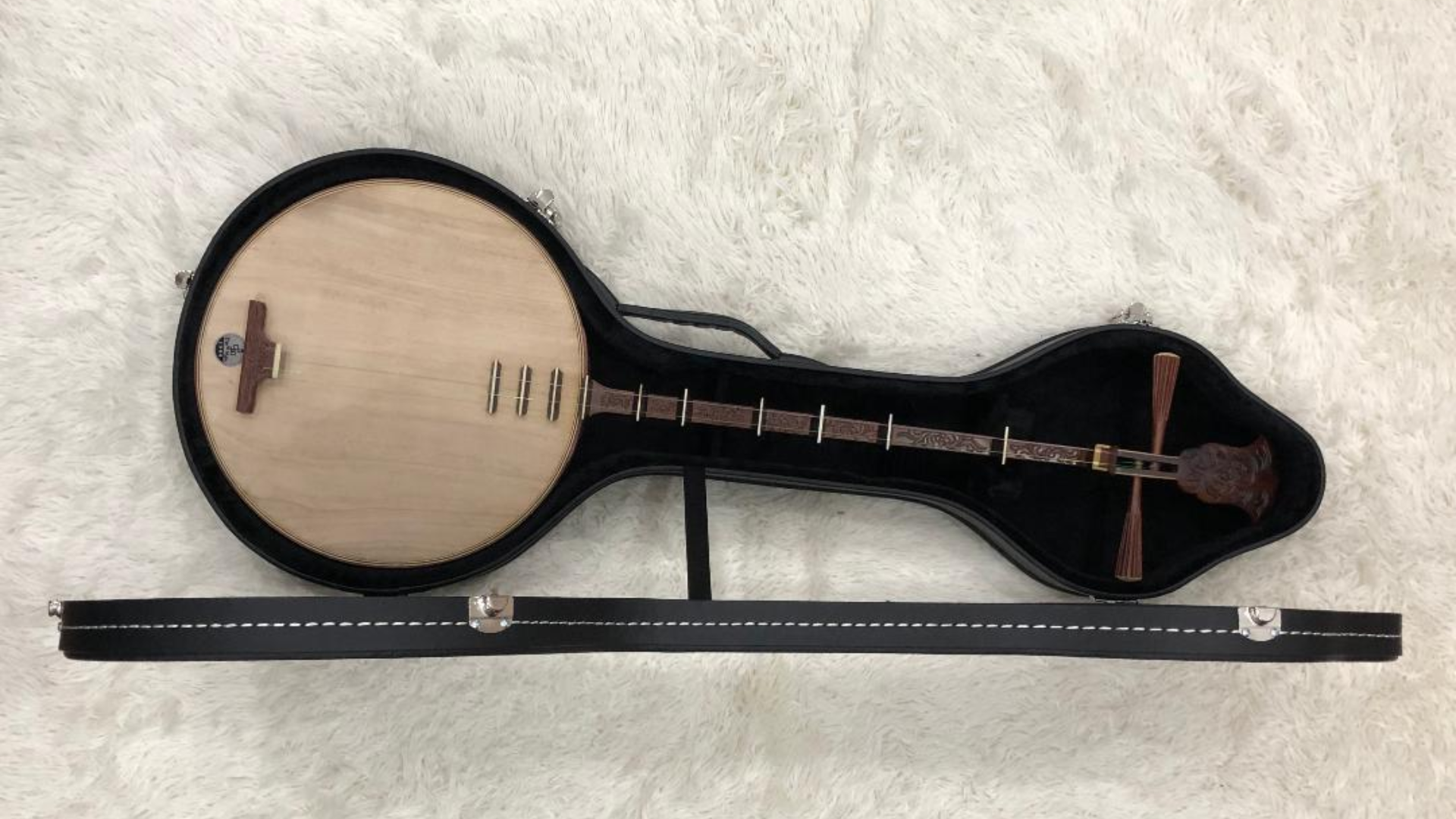
A đàn nguyệt is a Vietnamese two-string lute with a round body, also known as the moon lute.
- Origin: The đàn nguyệt originated in Vietnam, influenced by Chinese instruments but developed its own unique playing techniques and repertoire.
- Sound: The sound is expressive, capable of both delicate melodies and dramatic ornaments typical of Vietnamese music.
- How it works: Players pluck the strings with a pick while using the other hand to press and bend strings for pitch changes.
- Interesting fact: The round body resembles a full moon, which is why it’s called the “moon lute” in English translations.
20. Dotara
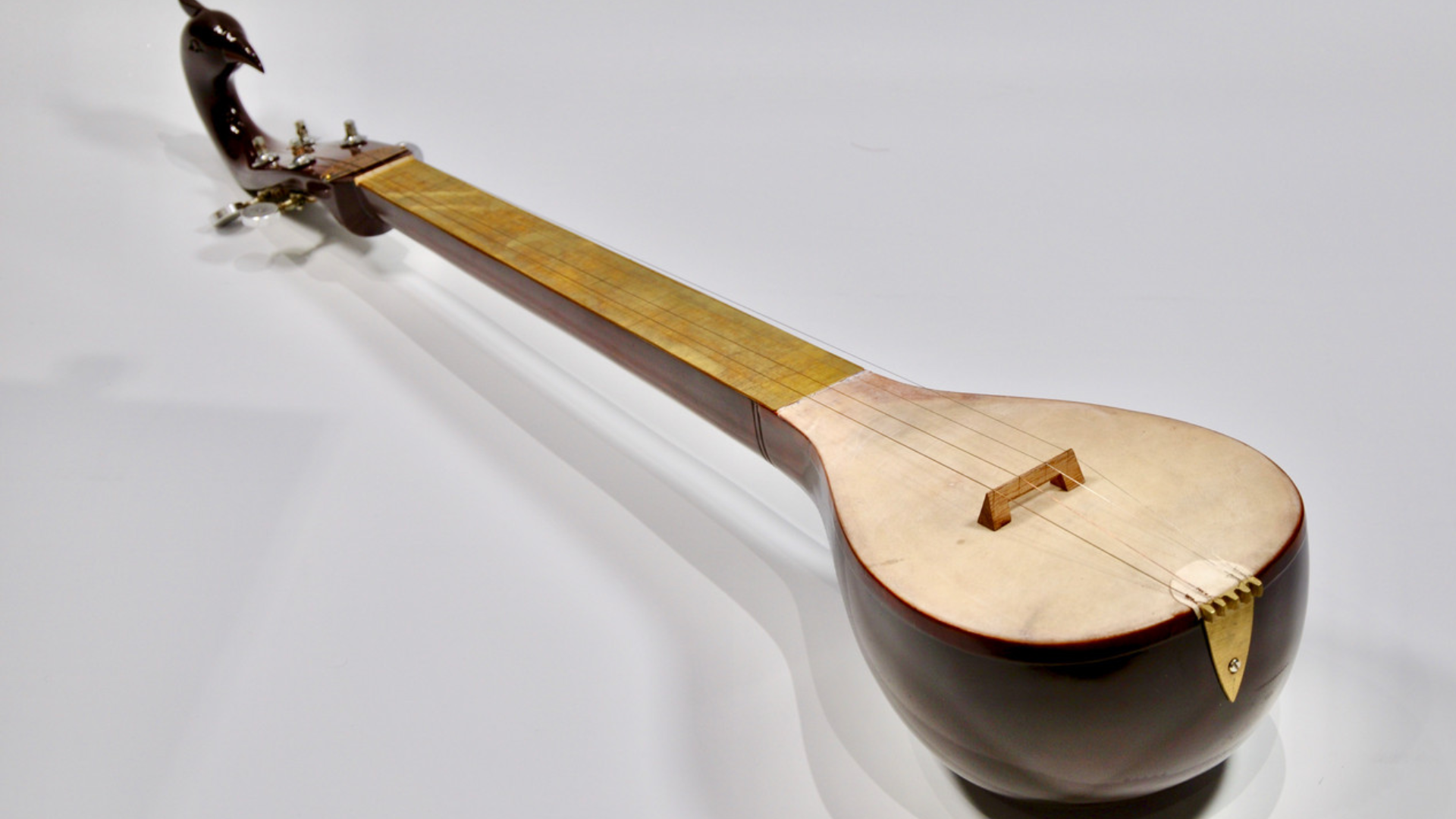
A dotara is a four-string plucked instrument from Bengal (Bangladesh and eastern India), despite its name meaning “two strings.”
- Origin: The dotara originated in Bengal and remains popular in the folk music of Bangladesh and West Bengal, India.
- Sound: The sound is bright, rhythmic, and melodic, perfect for accompanying traditional Bengali folk songs.
- How it works: Musicians pluck the four strings with fingers or a pick while fretting the neck to create melodies and rhythmic patterns.
- Interesting fact: Despite being called “dotara” (two strings), the modern instrument typically has four strings, showing how instruments evolve over time.
21. Dhrupad Tanpura
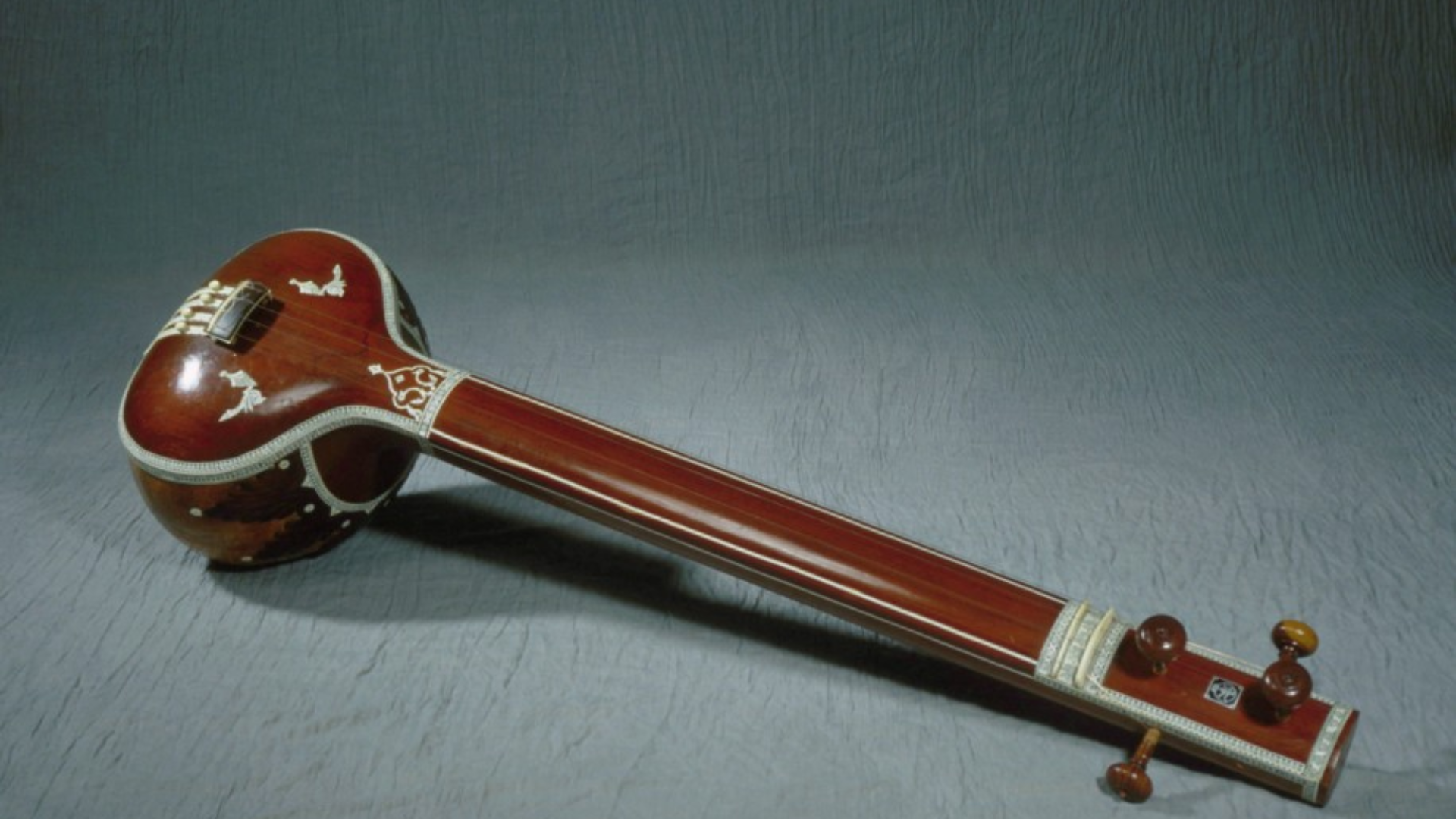
A dhrupad tanpura is a large, four-string drone instrument essential in Indian classical music, specifically for the dhrupad vocal style.
- Origin: The dhrupad tanpura developed in India as part of the ancient dhrupad tradition, the oldest form of Hindustani classical music.
- Sound: The sound is deep, resonant, and meditative, providing a constant harmonic foundation for vocal and instrumental music.
- How it works: Musicians pluck the strings in sequence to create a continuous drone that supports the main musical performance.
- Interesting fact: The tanpura’s strings are tuned to specific intervals that create natural harmonics, helping musicians stay in tune during long performances.
22. Dramyin

A dramyin is a Tibetan plucked string instrument with six strings, important in Tibetan folk music and religious ceremonies.
- Origin: The dramyin originated in Tibet and has been central to Tibetan culture for centuries, used in both secular and religious contexts.
- Sound: The sound is bright, melodic, and spiritually uplifting, often accompanying traditional Tibetan songs and prayers.
- How it works: Musicians pluck the six strings with fingers or a pick while fretting the neck to create melodies.
- Interesting fact: The dramyin is often decorated with traditional Tibetan symbols and is considered a sacred instrument in some Buddhist contexts.
Membranophones (Drum D-Instruments)
The heartbeat of human civilization lives within these drums that start with D. From ceremonial djembes to festival dhols, these instruments connect us to our most primal musical instincts and communal celebrations.
23. Djembe
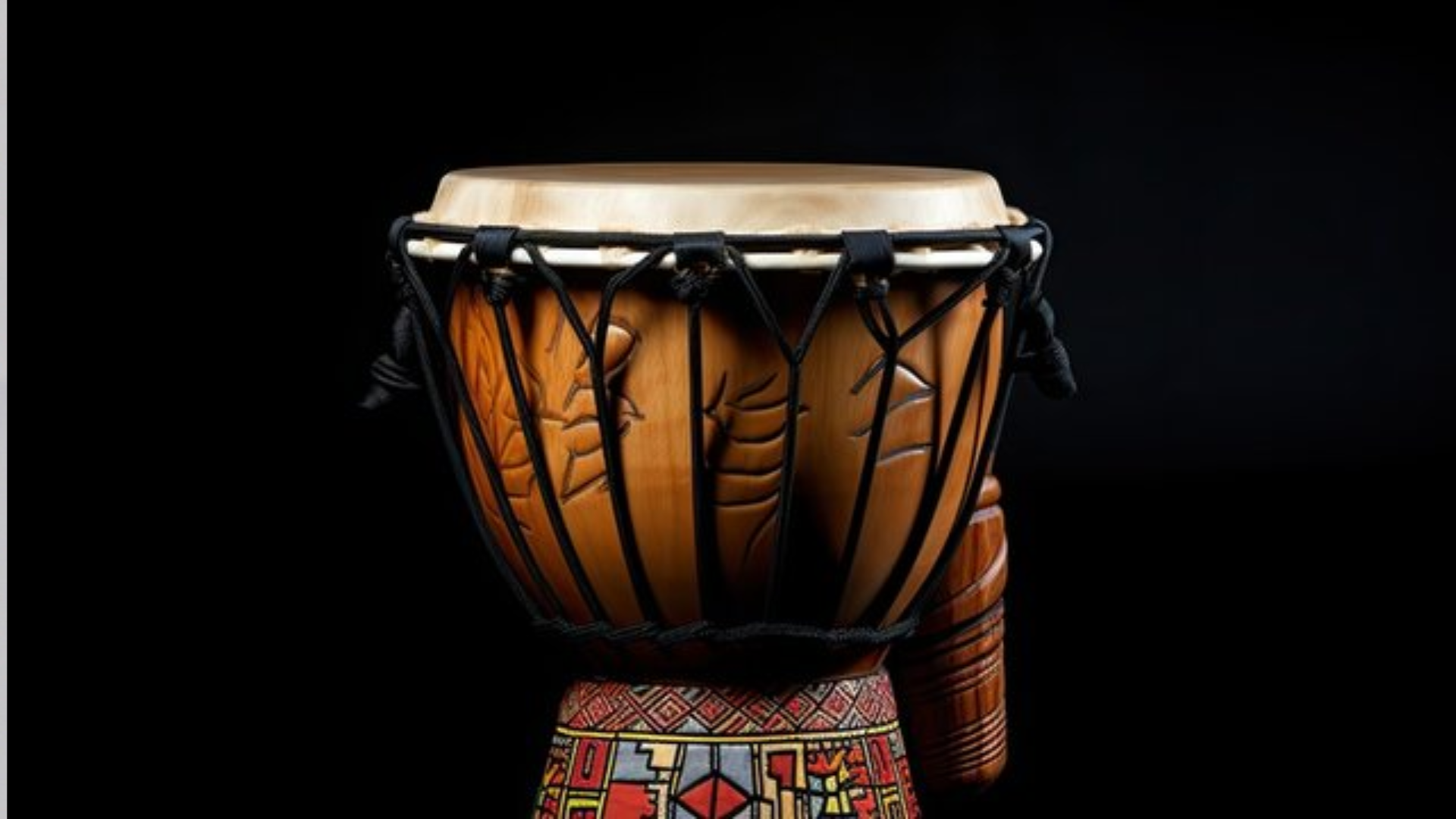
A djembe is a goblet-shaped West African drum played with bare hands, central to West African music and dance.
- Origin: The djembe originated in West Africa around 1200 AD among the Mandinka people and spread throughout the region.
- Sound: The sound includes deep bass tones, sharp slaps, and ringing tones, creating complex polyrhythmic patterns.
- How it works: Players strike different parts of the drumhead with various hand techniques to produce different tones and dynamics.
- Interesting fact: Traditional djembe construction uses rope tensioning systems, and the wooden shell is often carved from a single piece of hardwood.
24. Dholak
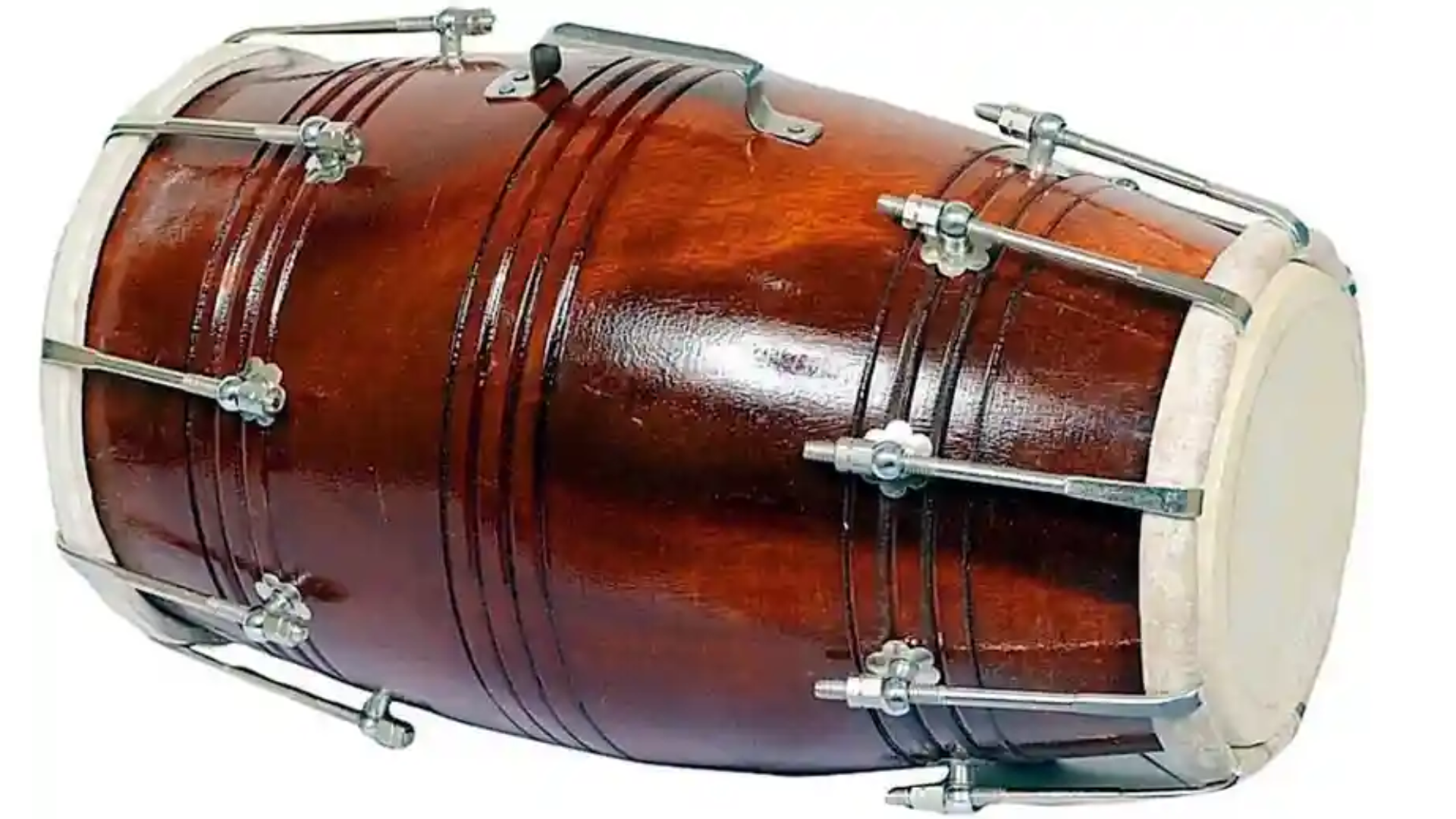
A dholak is a two-headed Indian folk drum played with hands and sticks, popular in North Indian folk music.
- Origin: The dholak originated in the Indian subcontinent and has been used for centuries in folk music, religious ceremonies, and celebrations.
- Sound: The sound is warm, resonant, and rhythmically complex, with different tones from each drumhead.
- How it works: Musicians play with their hands on one side and sticks on the other, creating intricate rhythmic patterns and accents.
- Interesting fact: The two drumheads are tuned to different pitches, with the smaller head producing higher tones and the larger head producing bass sounds.
25. Dhol
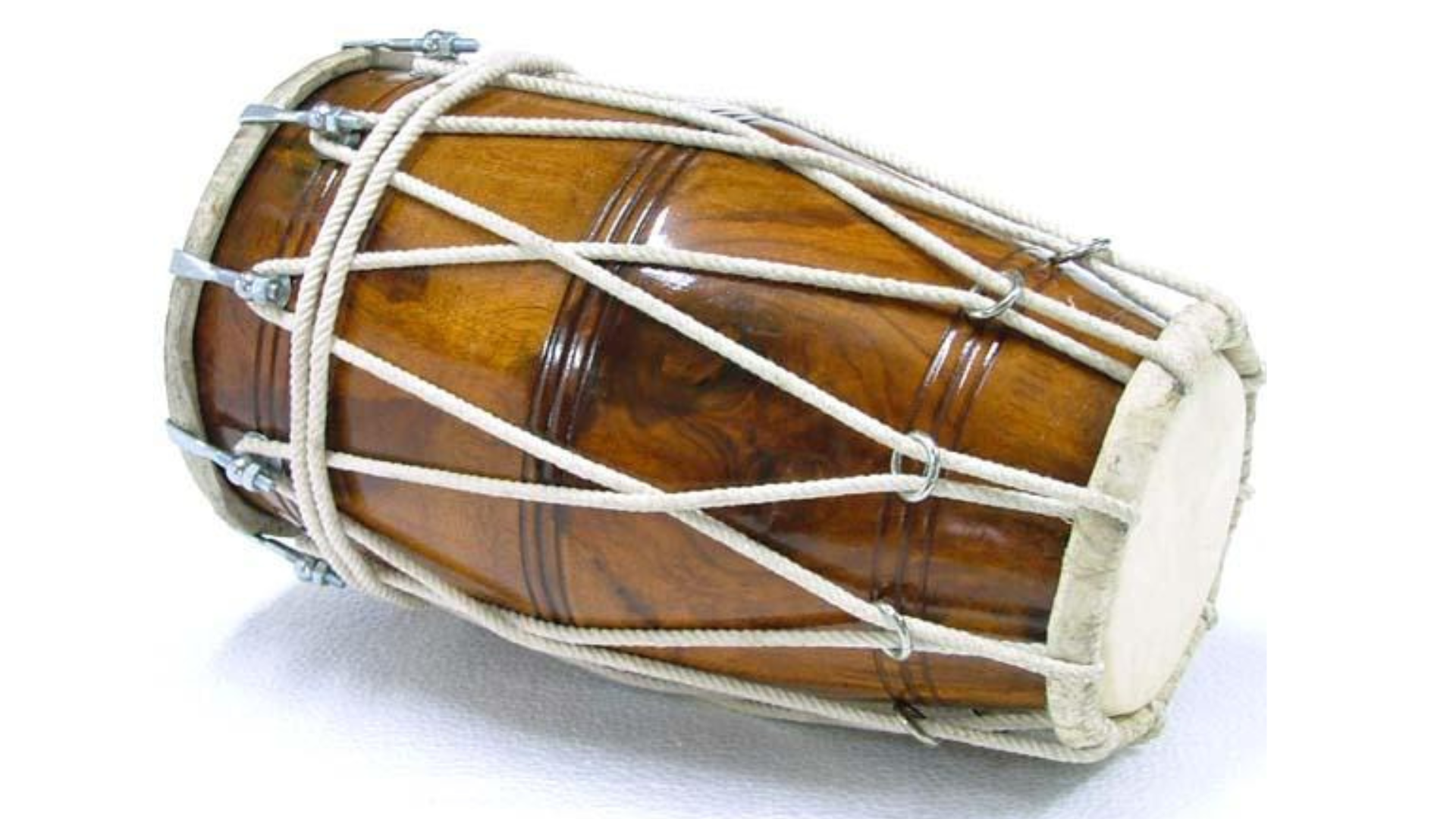
A dhol is a large, double-headed Indian drum played with sticks, essential in Punjabi folk music and Bhangra dance.
- Origin: The dhol originated in the Punjab region of India and Pakistan, where it became central to folk celebrations and religious festivals.
- Sound: The sound is powerful, driving, and energetic, capable of being heard over large crowds during outdoor celebrations.
- How it works: Players use two different sticks; a heavy stick for bass beats and a lighter stick for treble patterns.
- Interesting fact: The dhol is so important to Punjabi culture that the phrase “dhol bajana” (playing dhol) is synonymous with celebration and joy.
26. Darabuka
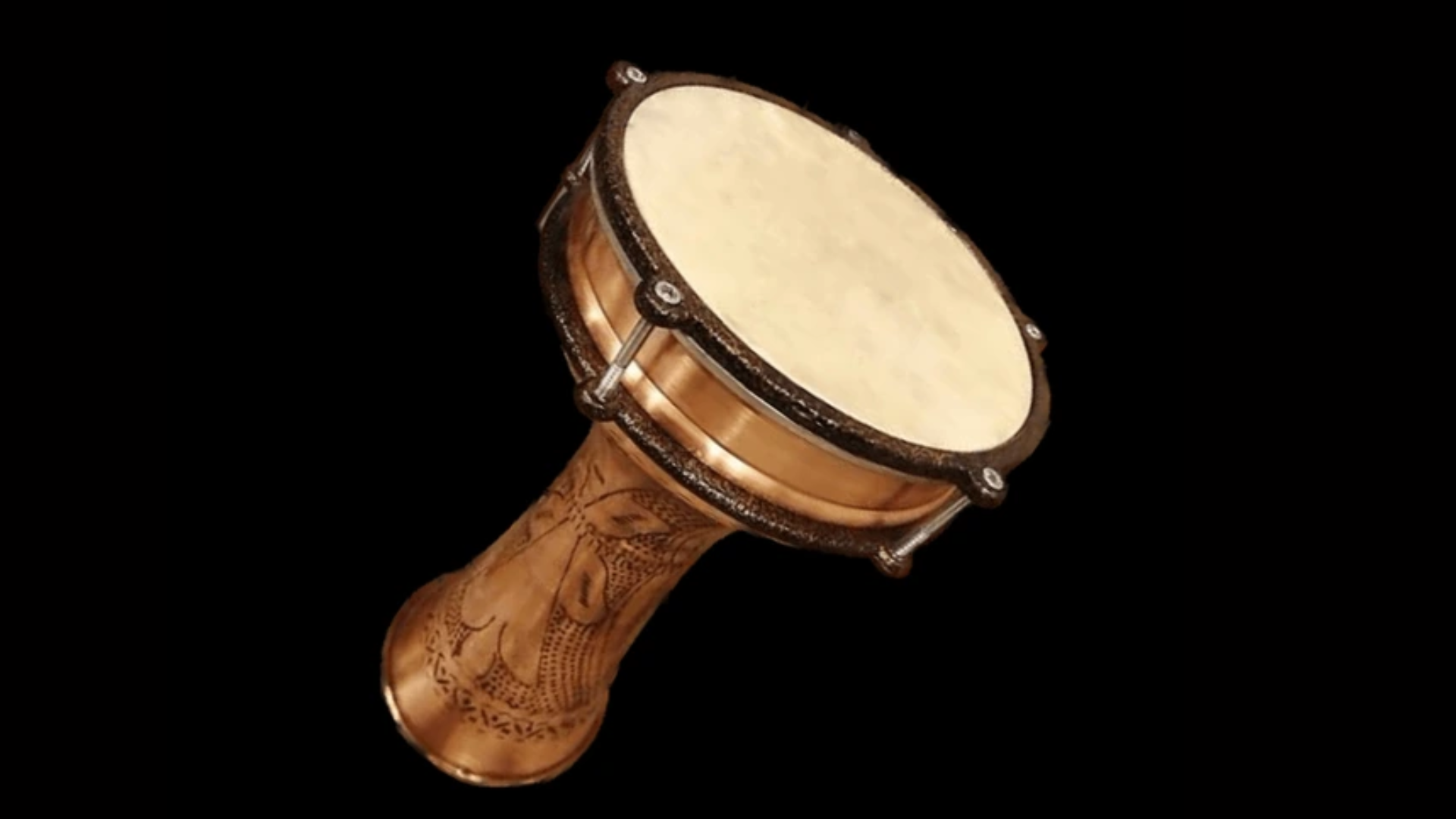
A darabuka is a goblet-shaped Middle Eastern drum with a single head, played with fingers and palms.
- Origin: The darabuka originated in the Middle East and North Africa, with variations found throughout the Arab world and the Mediterranean.
- Sound: The sound is crisp, resonant, and rhythmically precise, perfect for accompanying Middle Eastern music and dance.
- How it works: Players use various finger and hand techniques to create different tones, from deep bass sounds to sharp, metallic accents.
- Interesting fact: Modern darabukas often have synthetic heads and aluminum bodies, but traditional versions use animal skin and clay or wood.
27. Damaru
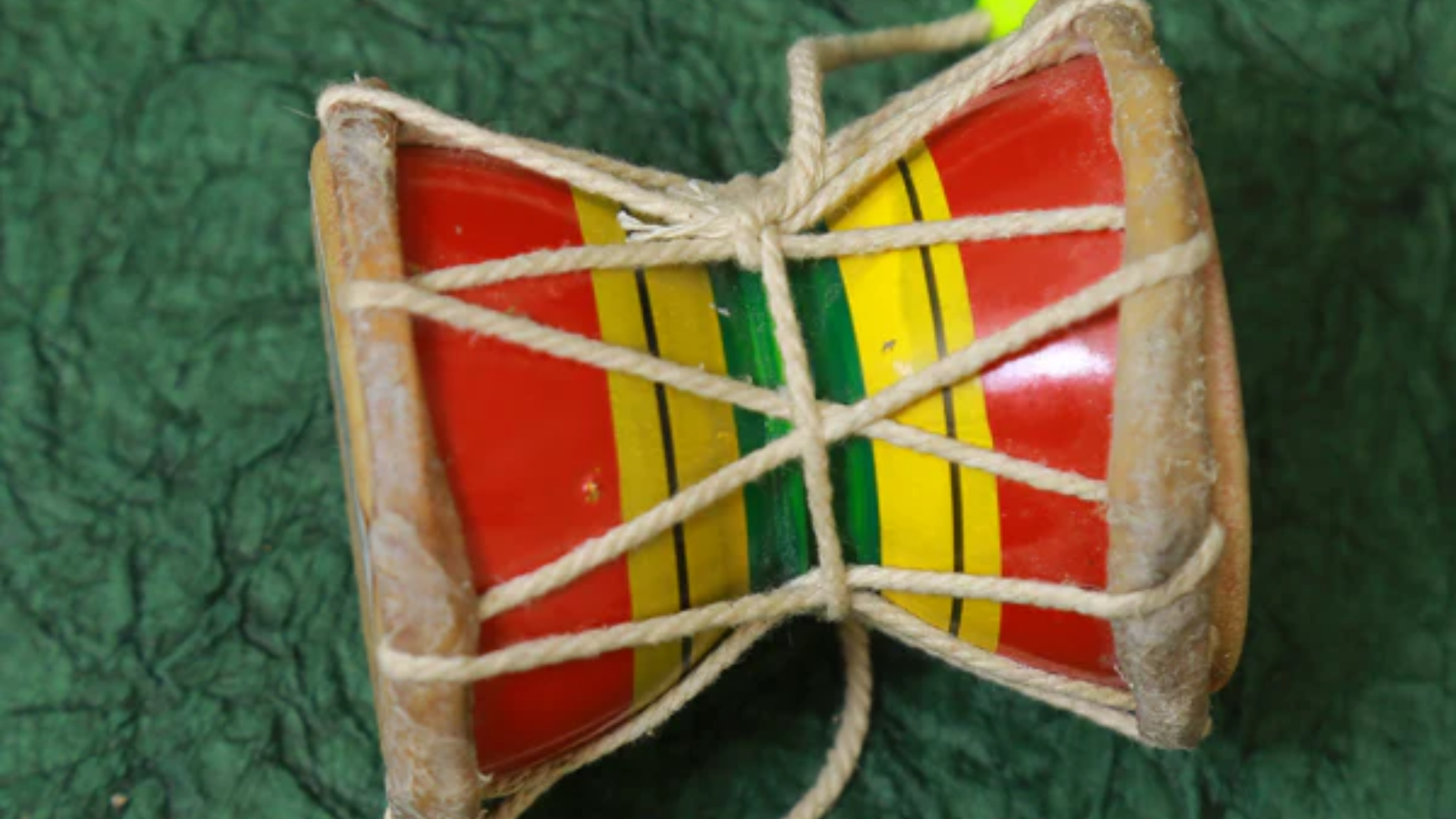
A damaru is a small, hourglass-shaped Indian drum with strings and beads that strike the heads when shaken.
- Origin: The damaru originated in ancient India and holds special significance in Hindu and Buddhist religious traditions.
- Sound: The sound is sharp, rhythmic, and meditative, created by the beads striking the drumheads as the instrument is twisted.
- How it works: Musicians hold the narrow waist and twist the drum back and forth, causing attached beads to strike both drumheads.
- Interesting fact: The damaru is associated with Lord Shiva in Hindu tradition and is believed to represent the cosmic sound of creation.
28. Daf
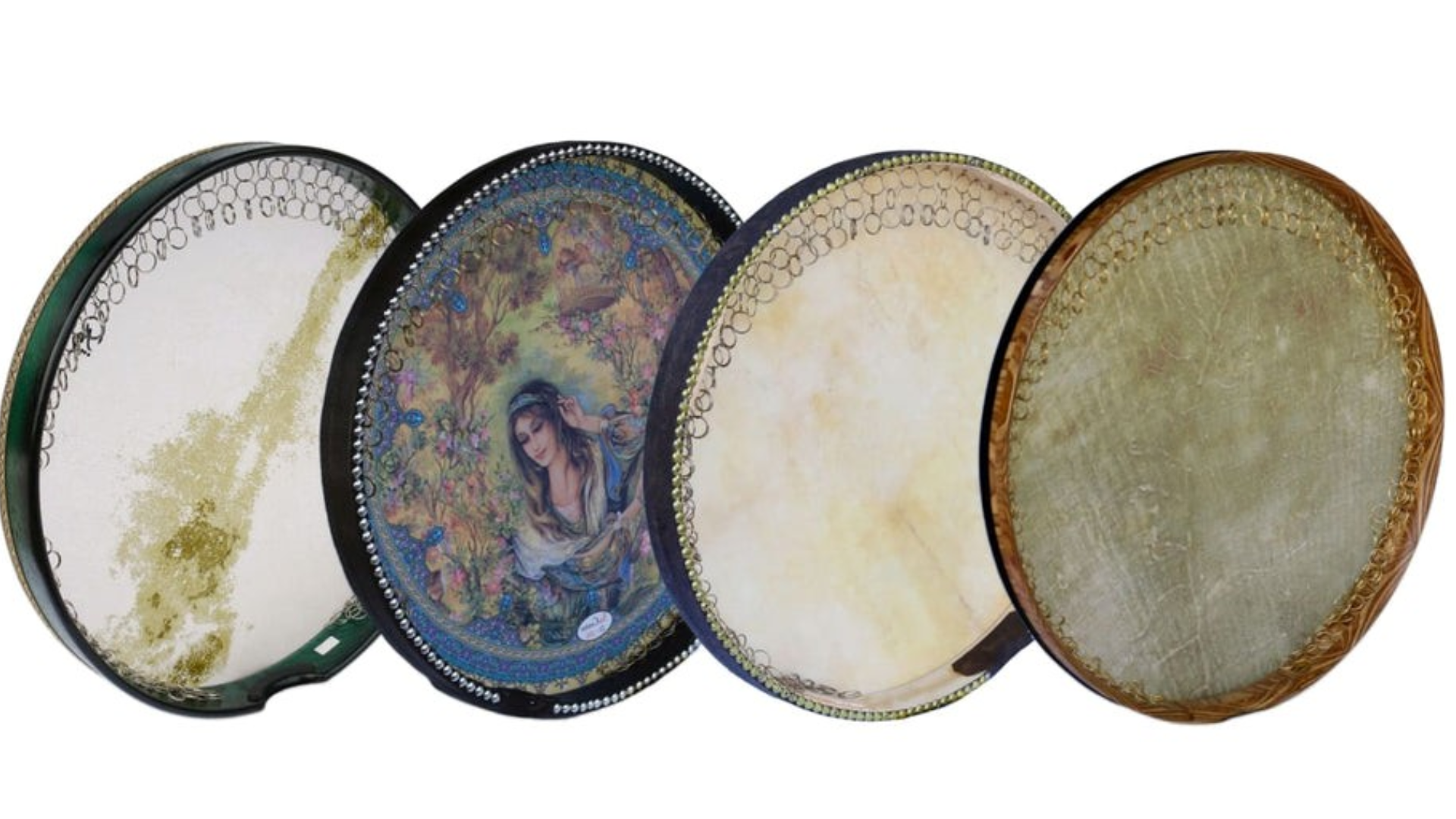
A daf is a Middle Eastern frame drum with metal rings or jingles around the rim, played with hands.
- Origin: The daf originated in the Middle East and Central Asia, where it plays important roles in both secular and sacred music.
- Sound: The sound combines the drum head’s tone with the bright jingle of metal rings, creating rich rhythmic textures.
- How it works: Players strike the drumhead while shaking the frame to activate the metal jingles around the rim.
- Interesting fact: The daf is particularly important in Sufi religious music, where its rhythms help induce meditative and trance-like states.
29. Dholki
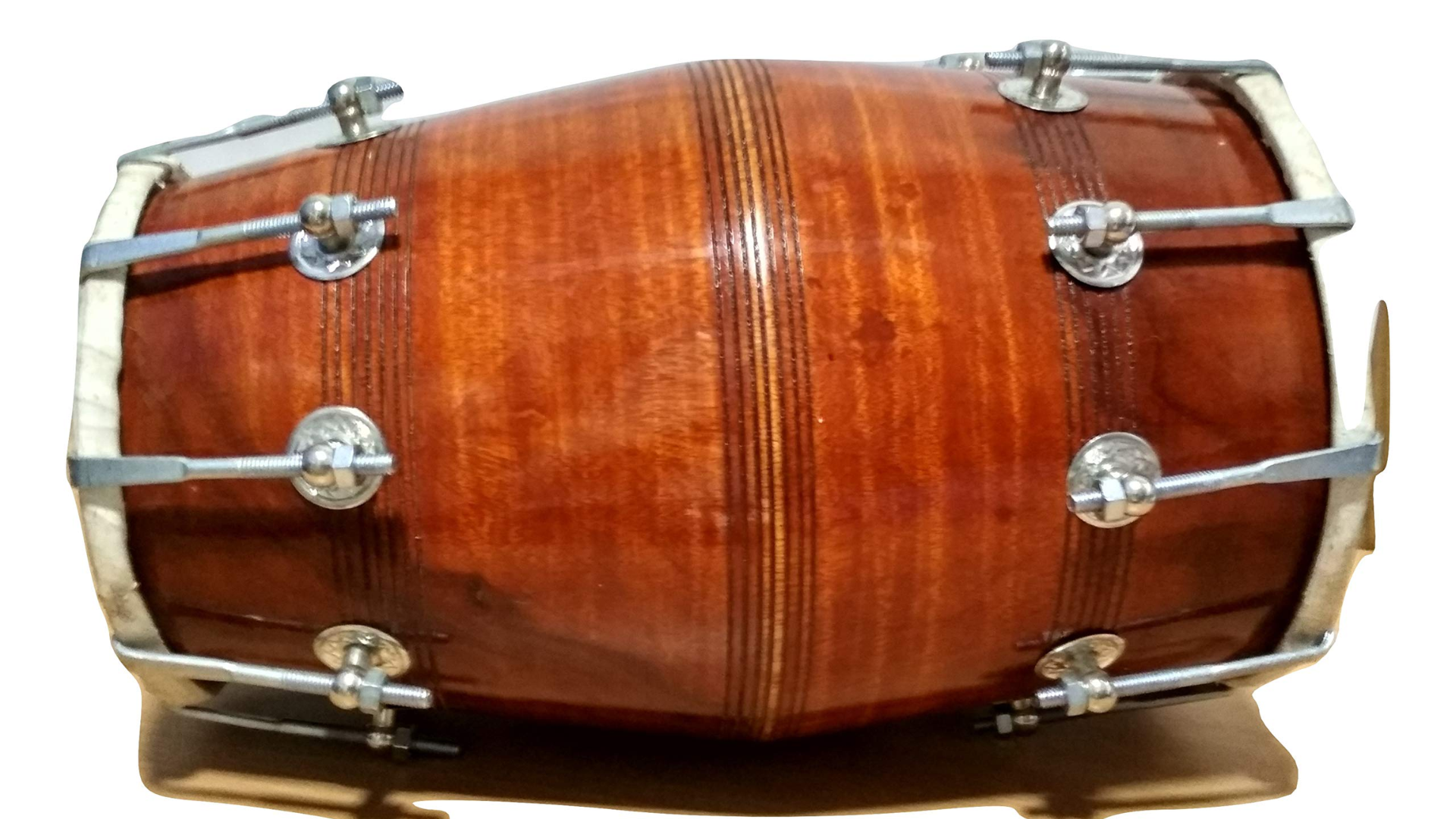
A dholki is a smaller version of the dholak drum, often with metal jingles, used in Indian folk celebrations.
- Origin: The dholki developed as a portable version of the larger dholak, perfect for smaller gatherings and intimate celebrations.
- Sound: The sound is bright, festive, and rhythmic, with optional jingles adding extra sparkle to the rhythm.
- How it works: Musicians play with their hands and fingers while the attached jingles create additional percussive sounds.
- Interesting fact: The dholki is often played by women during traditional ceremonies, making it an important part of female musical traditions.
30. Dap
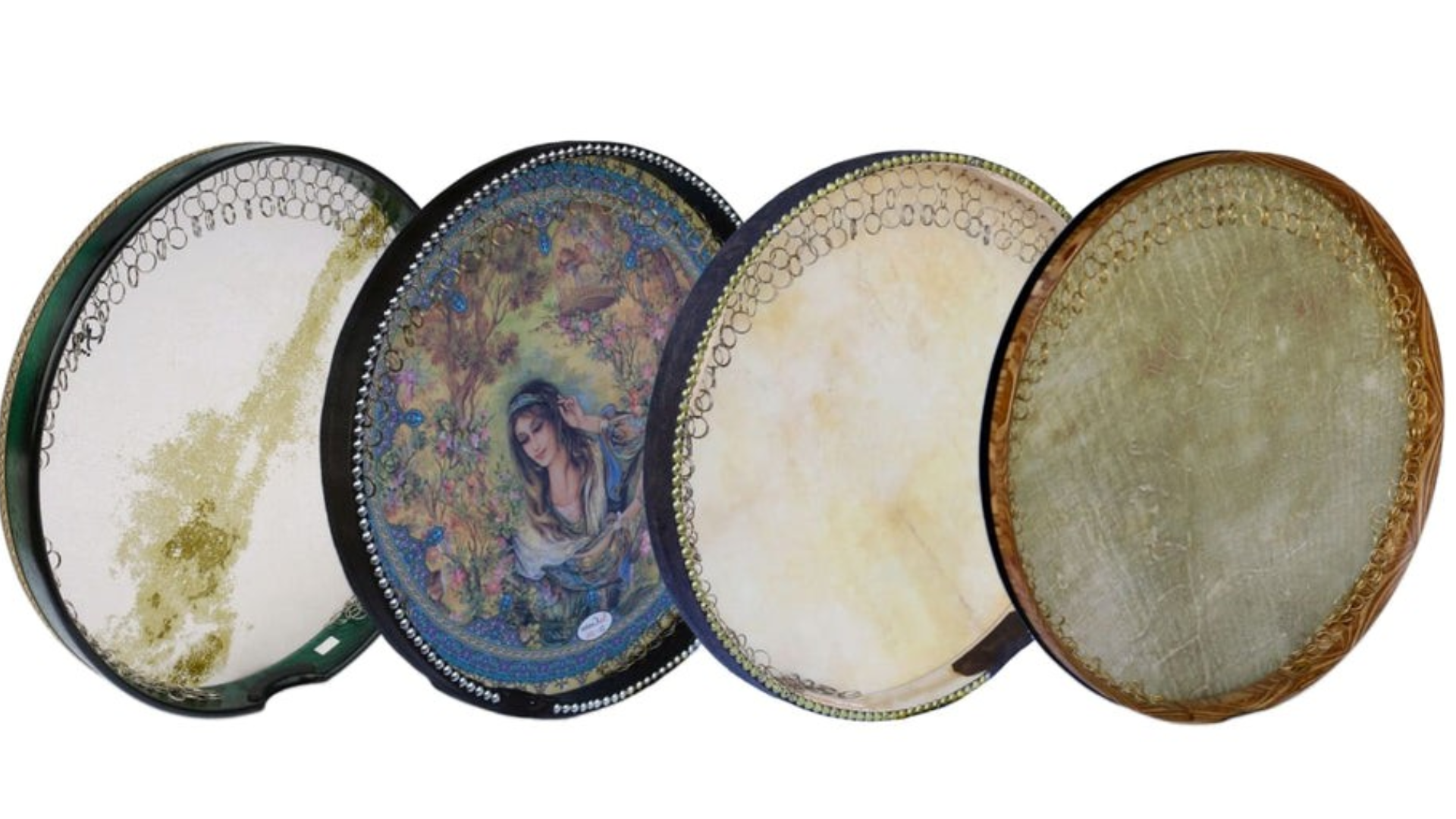
A dap is a Korean frame drum similar to a tambourine, used in traditional Korean folk music and shamanic rituals.
- Origin: The dap originated in Korea and has been used in both court music and folk traditions for centuries.
- Sound: The sound is bright, rhythmic, and spiritually significant, often used to invoke spiritual states in shamanic practices.
- How it works: Musicians strike the drumhead while shaking to activate any attached metal elements.
- Interesting fact: In Korean shamanism, the dap is believed to help communicate with spirits and is essential for traditional healing ceremonies.
31. Dabakan
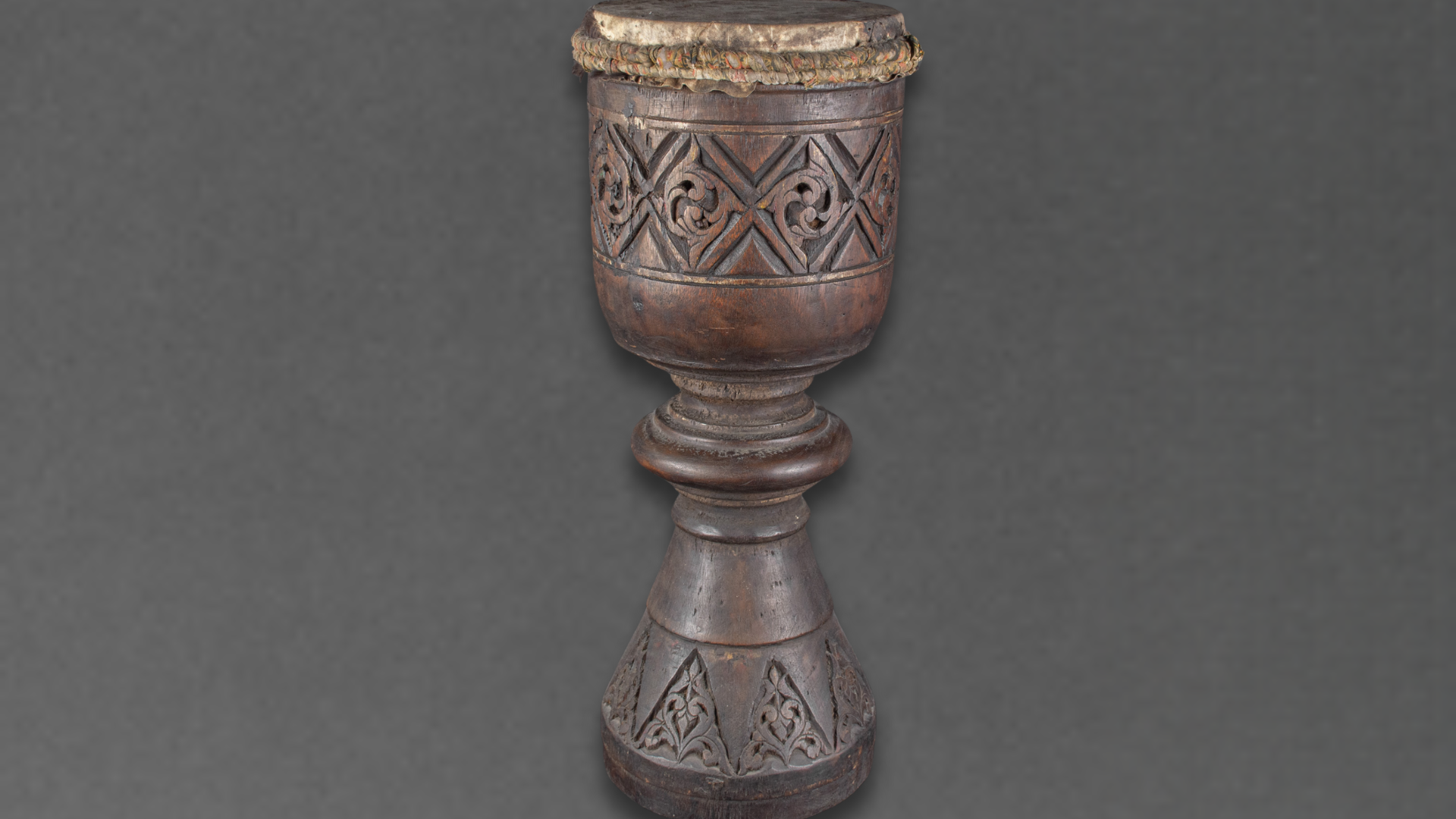
A dabakan is a Filipino goblet drum traditionally made from jackfruit wood, used in Southern Philippine music.
- Origin: The dabakan originated in the Southern Philippines, particularly among the Maranao and Maguindanao peoples.
- Sound: The sound is deep, resonant, and rhythmically complex, providing the foundation for traditional Filipino ensemble music.
- How it works: Musicians strike the single drumhead with hands or sticks, creating various tones depending on where and how it’s struck.
- Interesting fact: The dabakan is often carved with traditional Filipino designs and is considered both a musical instrument and a work of art.
Idiophones (Self-Sounding D-Instruments)
These self-vibrating instruments create magic through their own material properties, needing no strings or membranes to sing.
From ancient Chinese bells to modern desk bells, they prove that sometimes the simplest concepts produce the most beautiful sounds.
32. Dulcitone
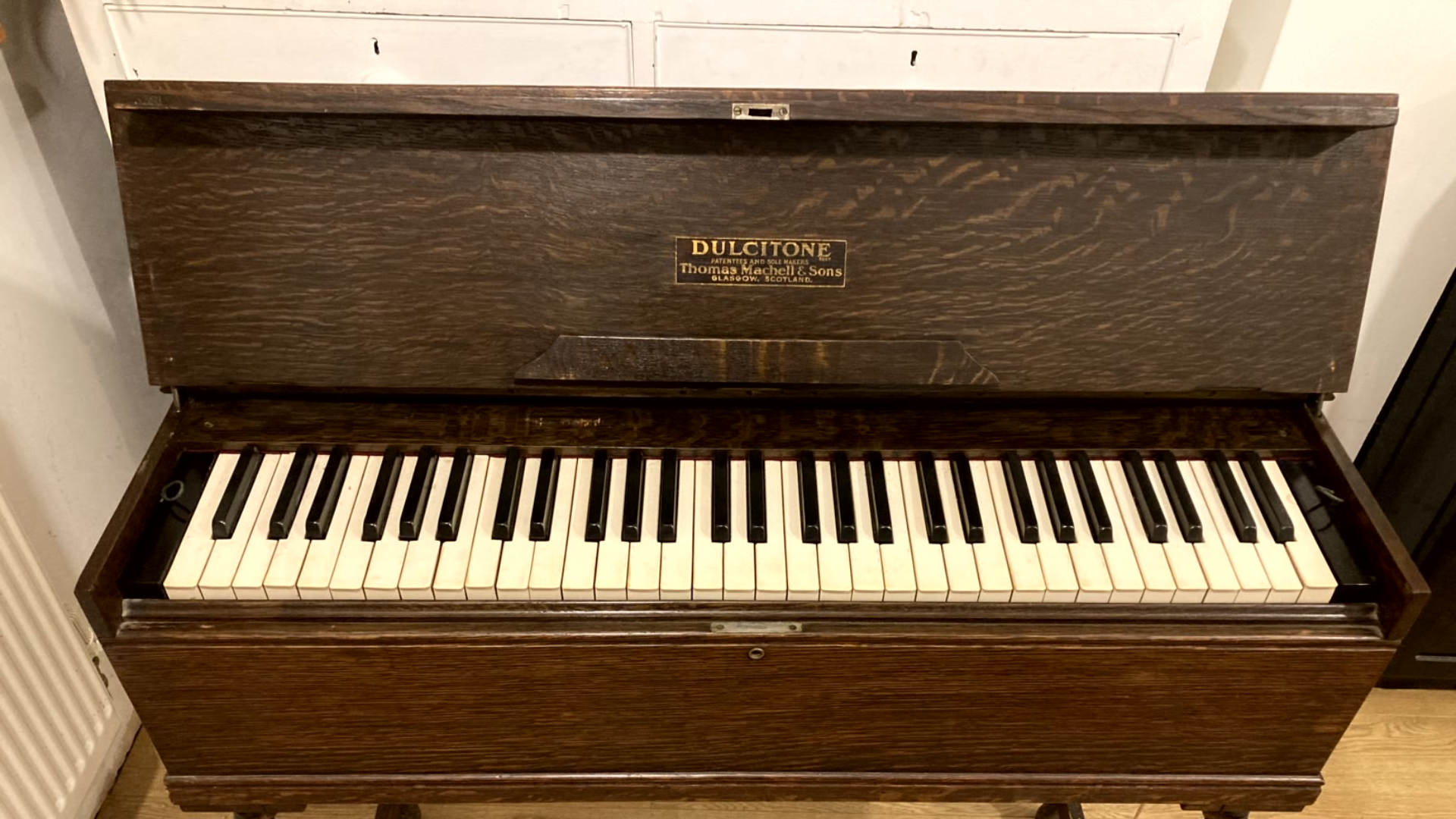
A dulcitone is a keyboard instrument that strikes tuning forks instead of strings, creating pure, bell-like tones.
- Origin: The dulcitone was invented in the late 19th century as an alternative to the piano that wouldn’t go out of tune.
- Sound: The sound is pure, sustained, and bell-like, with each note maintaining perfect pitch over time.
- How it works: Pressing keys causes hammers to strike tuning forks, which resonate to produce sustained musical tones.
- Interesting fact: The dulcitone was popular in homes and small venues because it never needed tuning, unlike pianos, which required regular maintenance.
Although it has a keyboard like a piano, it’s technically a keyboard idiophone because it strikes tuning forks instead of strings.
33. Dancing Bells
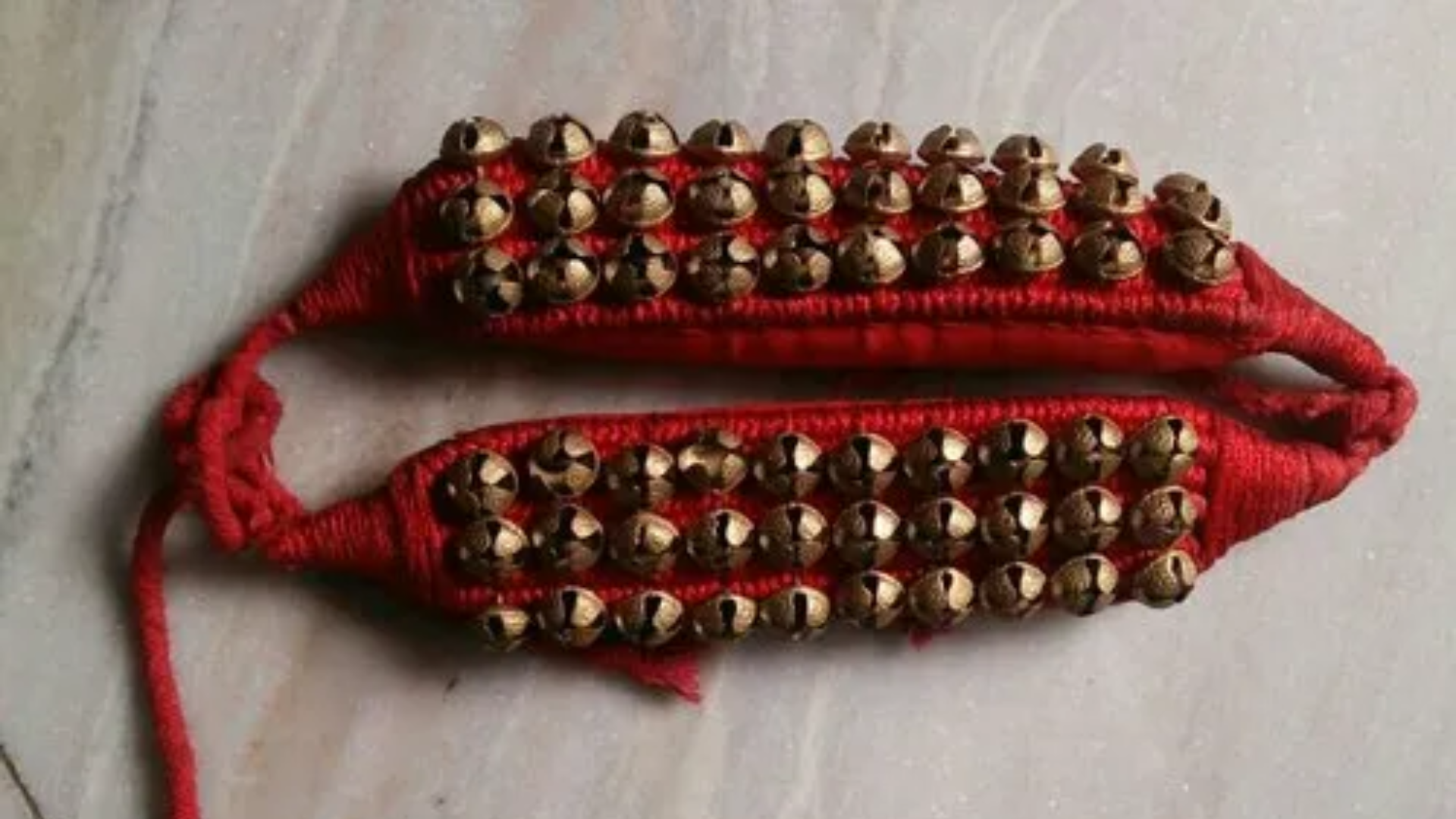
Dancing bells are small bells worn by dancers or attached to instruments to add rhythmic accompaniment to performances.
- Origin: Dancing bells developed in various cultures worldwide, particularly in Indian classical dance and folk traditions.
- Sound: The sound is bright, jingling, and rhythmic, following the movements of dancers or musicians.
- How it works: Small bells are attached to ankles, wrists, or instruments and sound when moved or shaken.
- Interesting fact: In Indian classical dance, the patterns created by dancing bells are considered an integral part of the musical performance, not just decoration.
34. Desk Bell
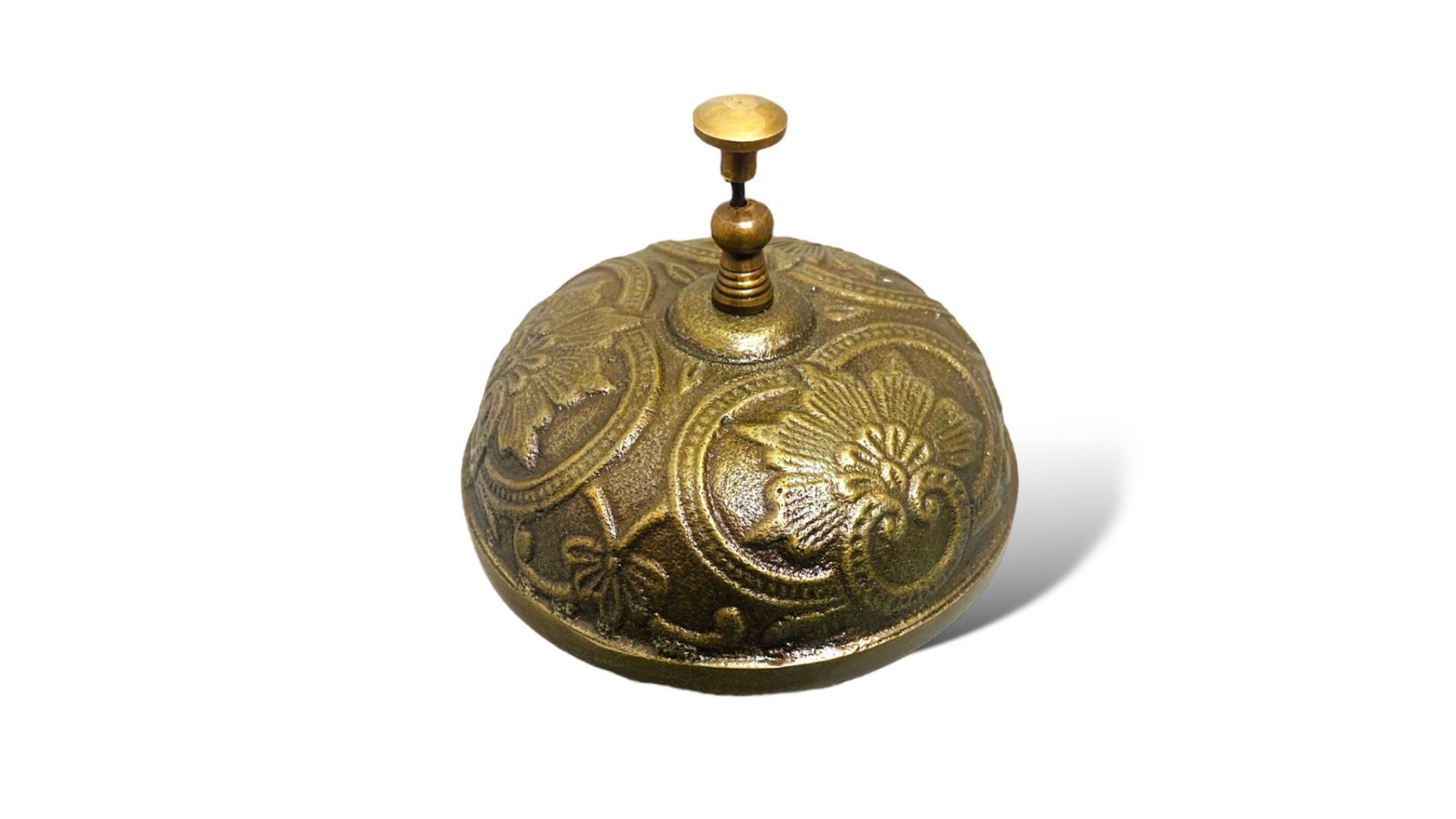
A desk bell is a small metal bell operated by pressing a button or lever, commonly used for service calls and musical effects.
- Origin: The desk bell was developed in the 19th century for commercial use but has been adapted for musical performances and sound effects.
- Sound: The sound is bright, clear, and immediate, producing a single sharp ring when activated.
- How it works: Pressing the button releases a spring-loaded striker that hits the metal bell, creating an instant sound.
- Interesting fact: Desk bells have found their way into orchestral music, where composers use them for special effects and comic musical moments.
35. Dundun Bell
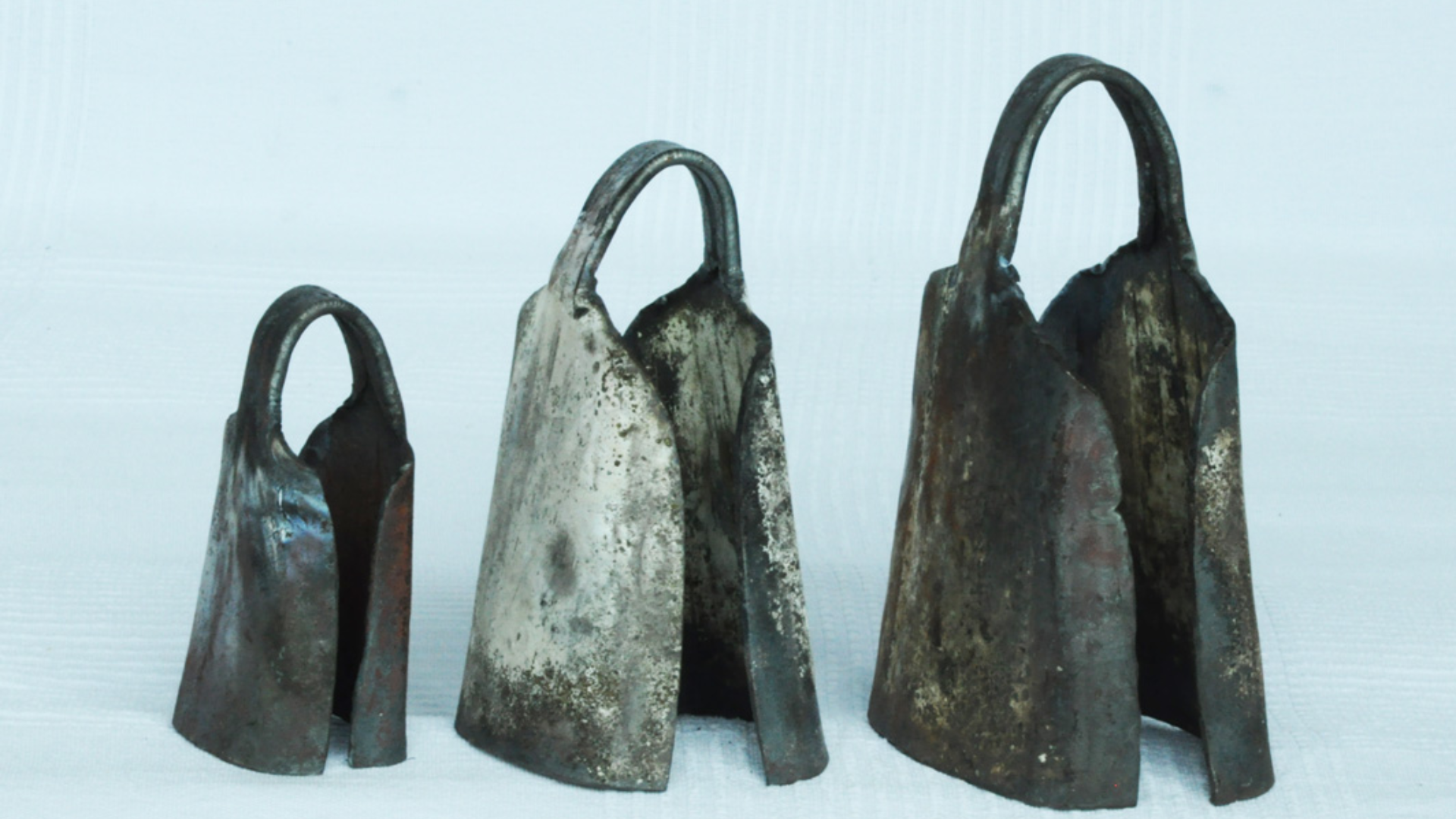
A dundun bell is a metal bell attached to West African dundun drums, creating additional rhythmic layers in traditional drumming.
- Origin: The dundun bell developed as part of West African drumming traditions, where it adds metallic accents to drum ensembles.
- Sound: The sound is bright, metallic, and rhythmic, cutting through the deeper tones of the drums.
- How it works: The bell is struck with a stick while playing the drum, creating complex polyrhythmic patterns.
- Interesting fact: The dundun bell helps drummers communicate with dancers, with specific bell patterns signaling different dance movements.
Conclusion
From ancient didgeridoos to gentle dulcimers, these instruments demonstrate the creativity of humans in making music.
Each tells a story about survival, celebration, or connecting with something bigger than ourselves. Right now, someone’s playing a daf in a Middle Eastern ceremony while another person strums a dombra under Central Asian stars.
Listen to these instruments on streaming apps, visit world music stores, or check if your library lends instruments.
Curious about more instruments? Check out our guides for instruments starting with B, G, F, H, I and more!






